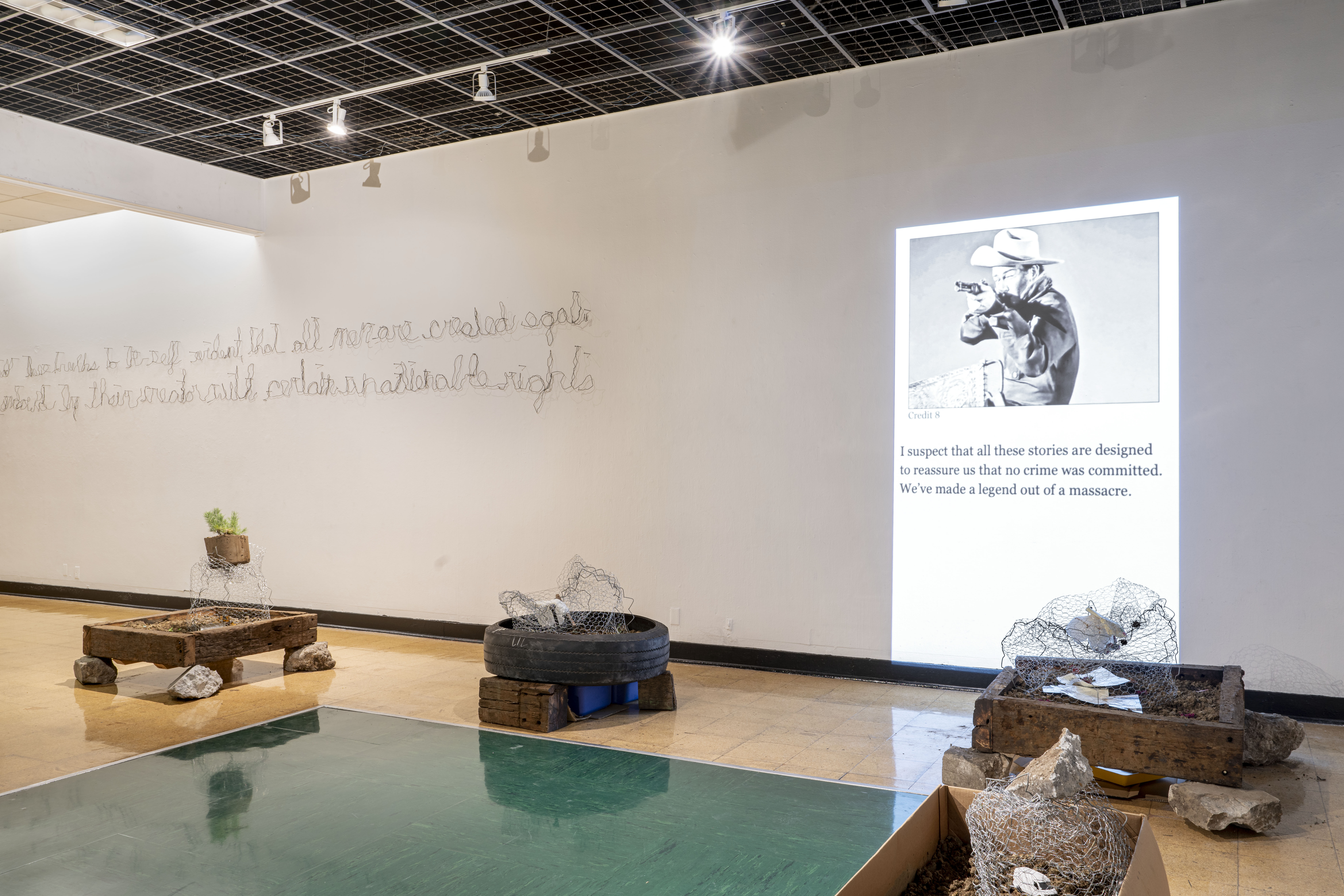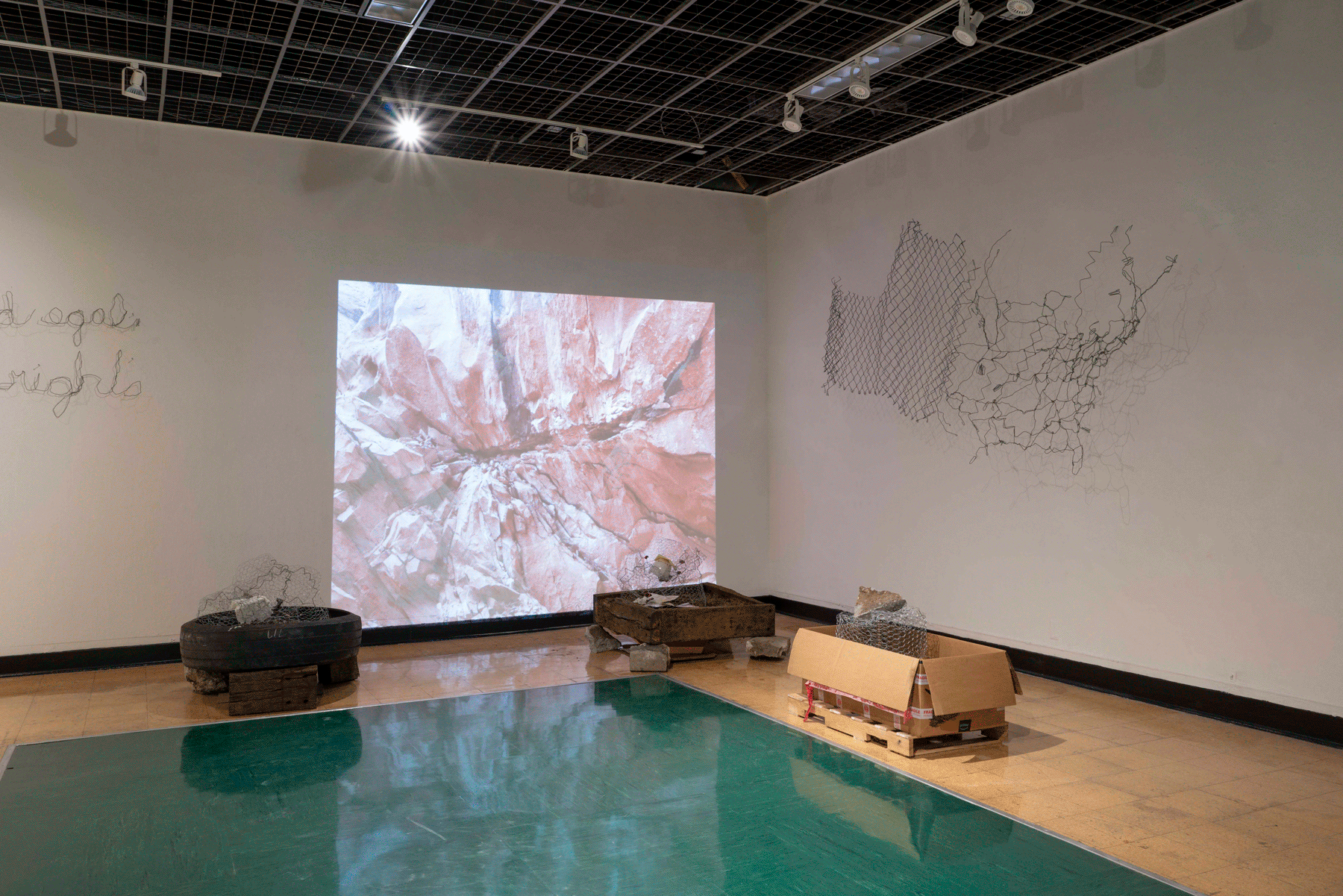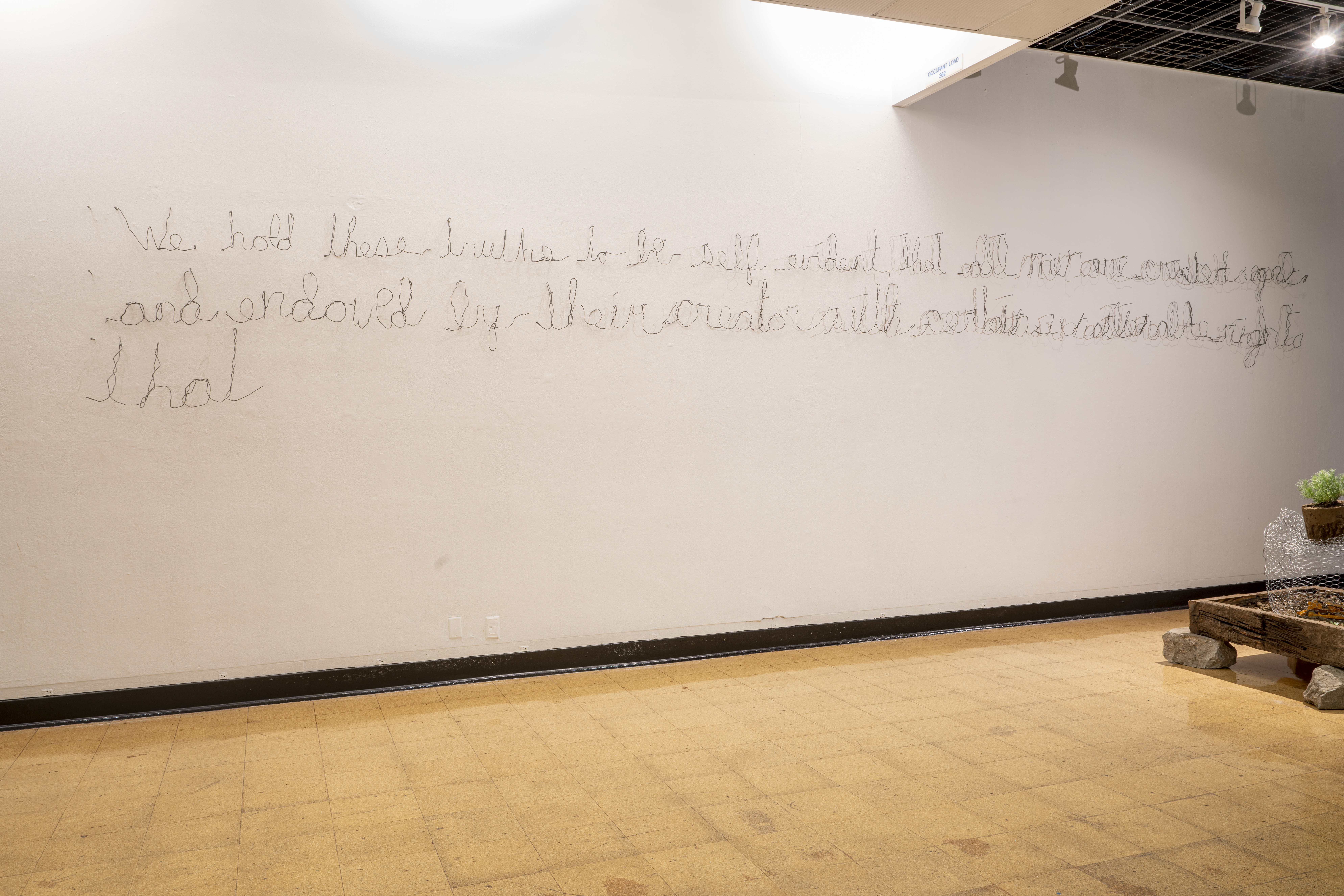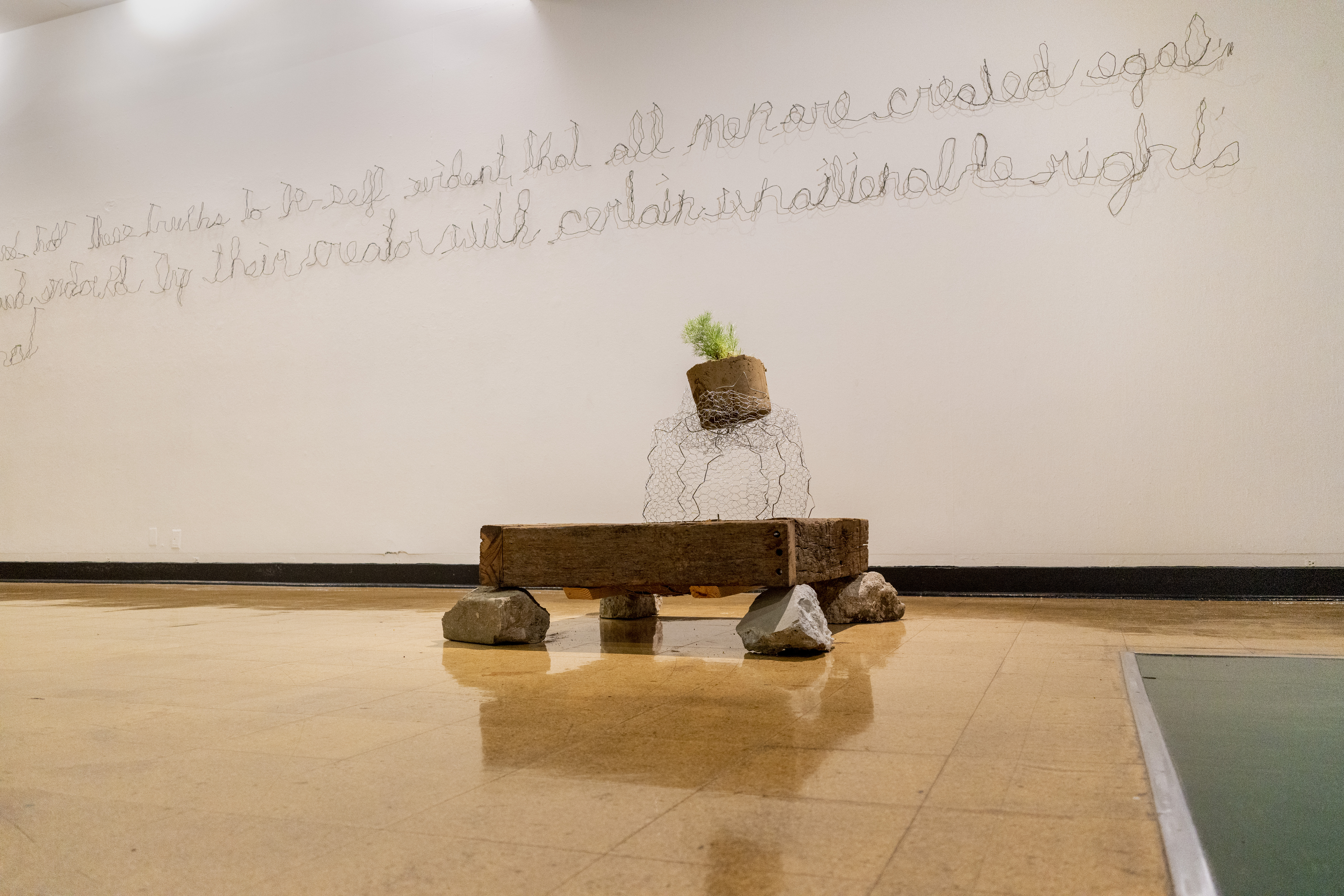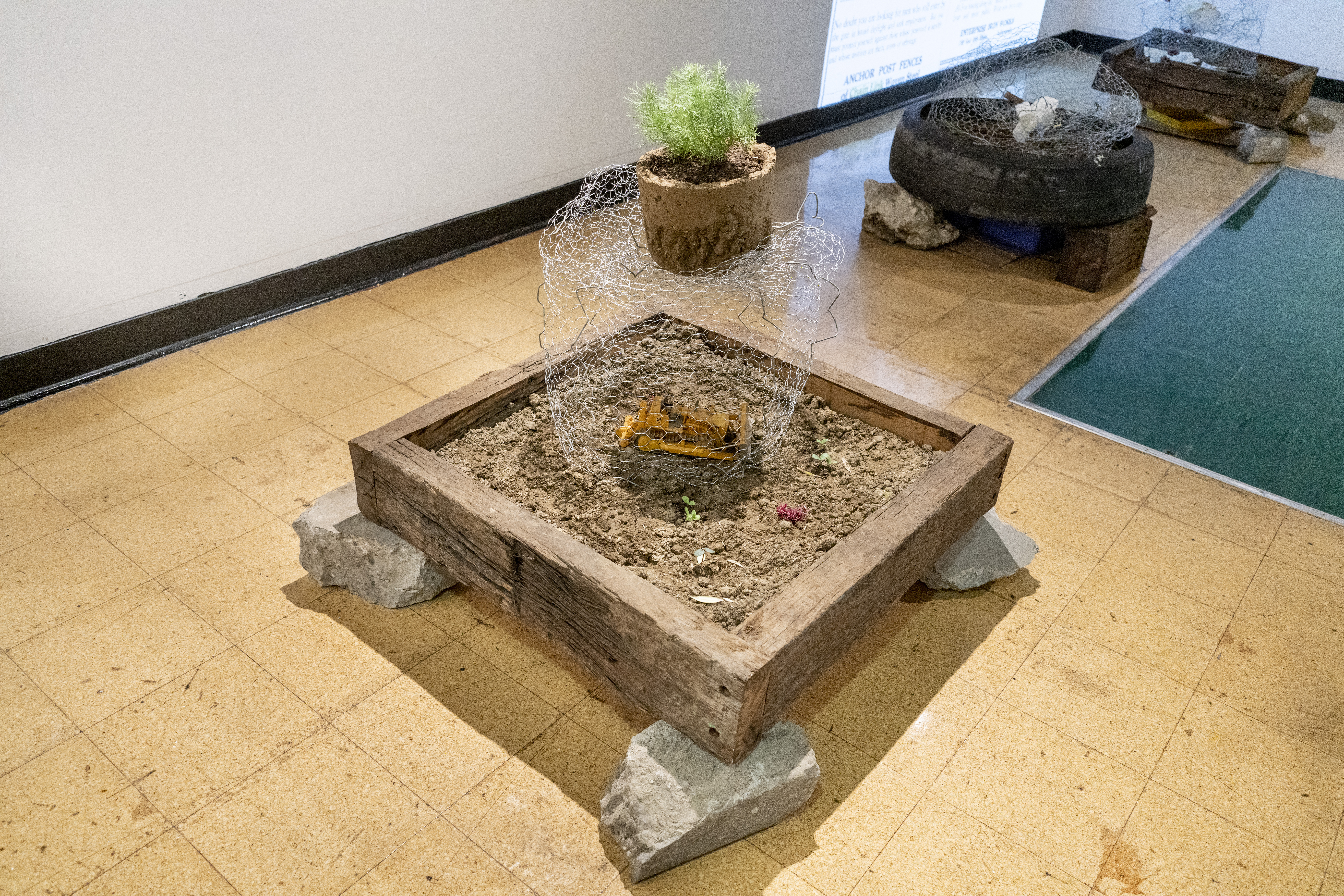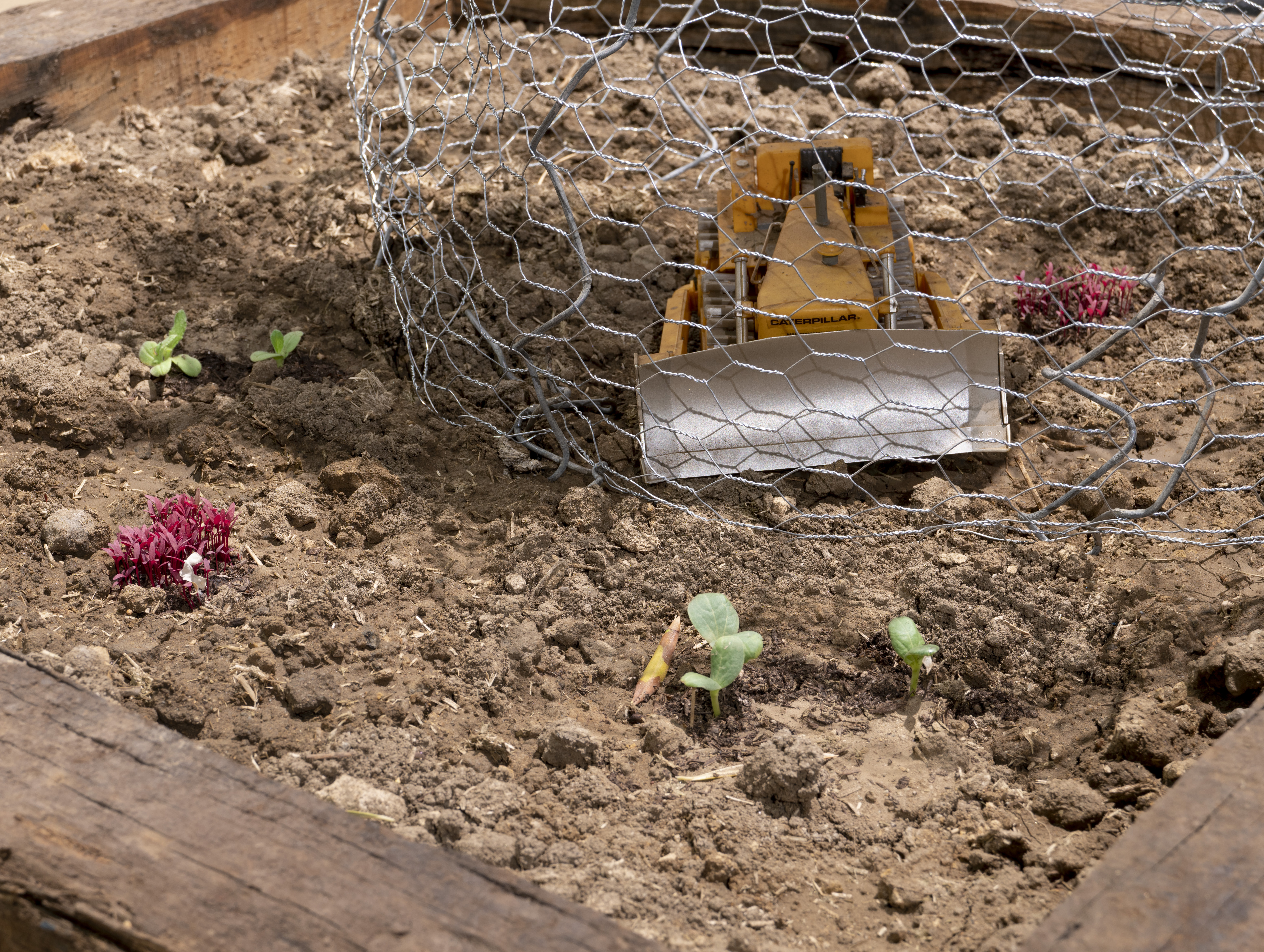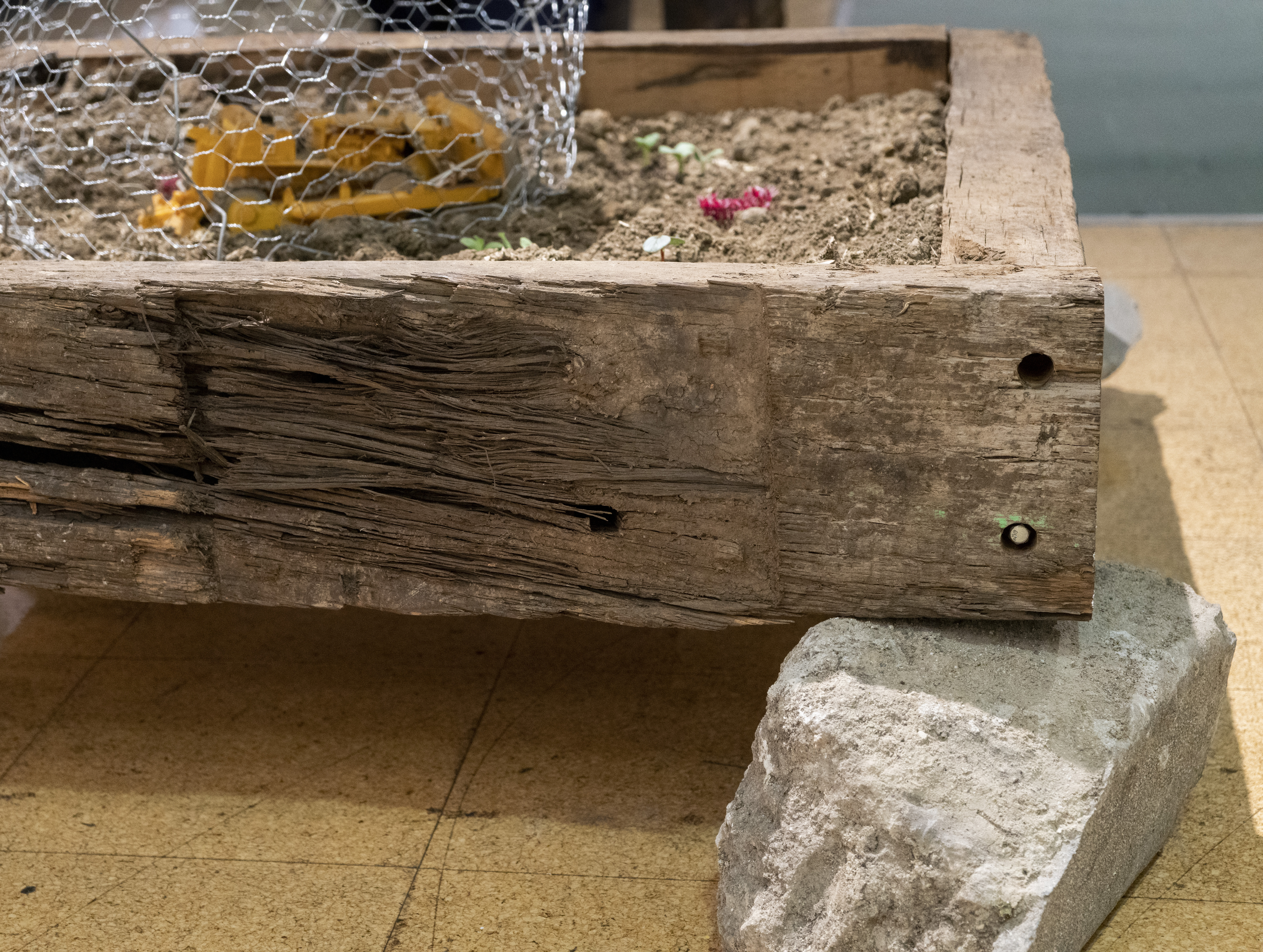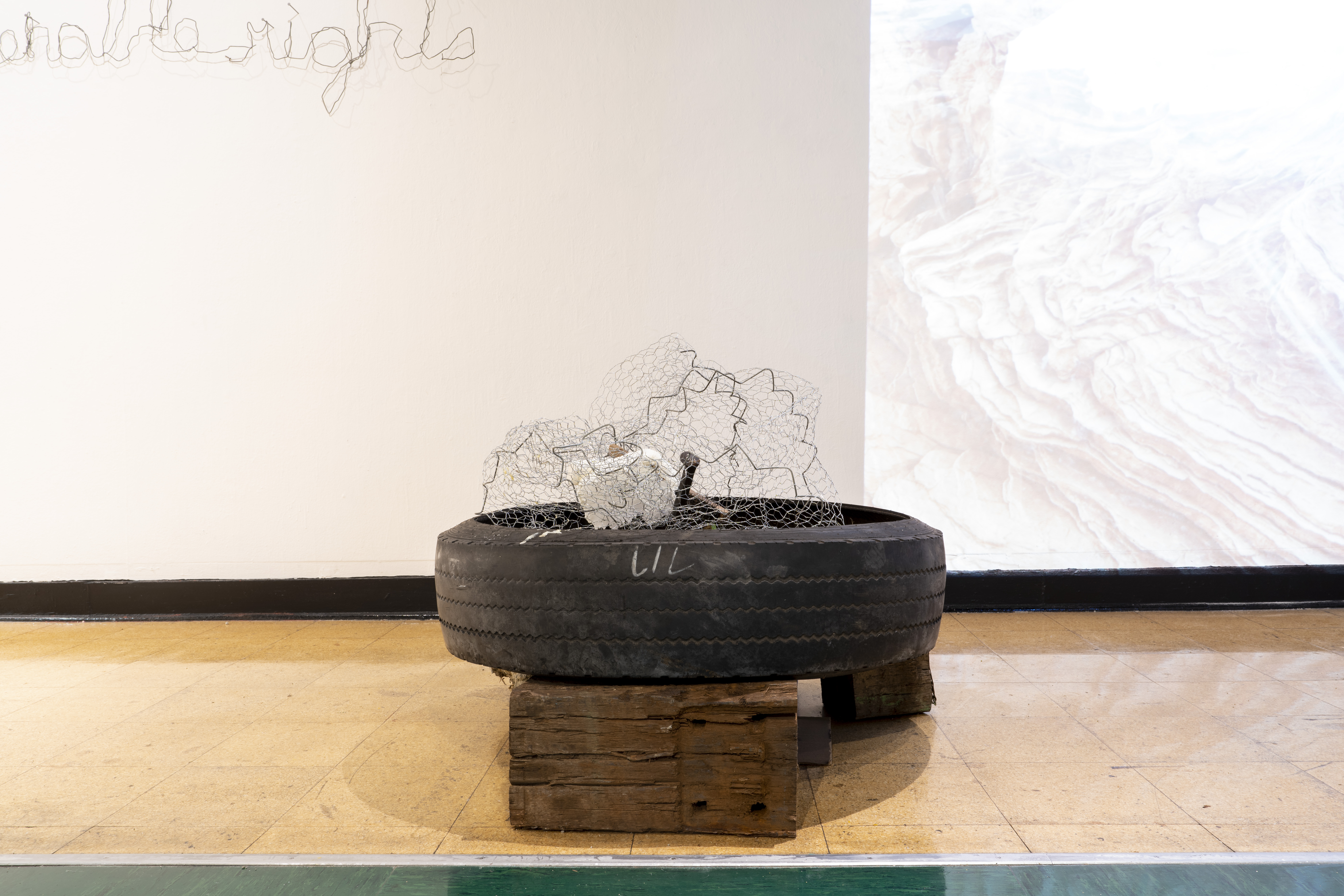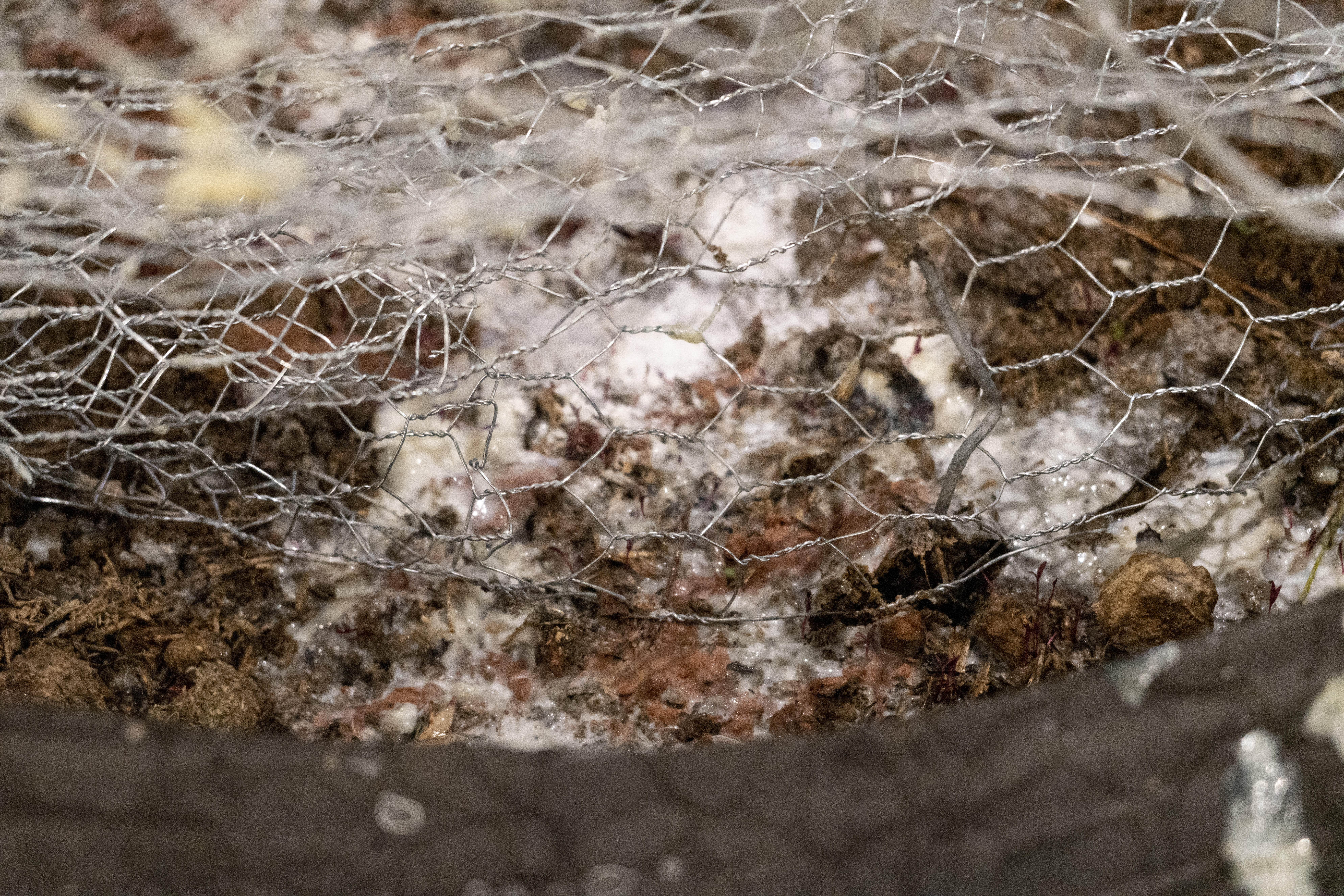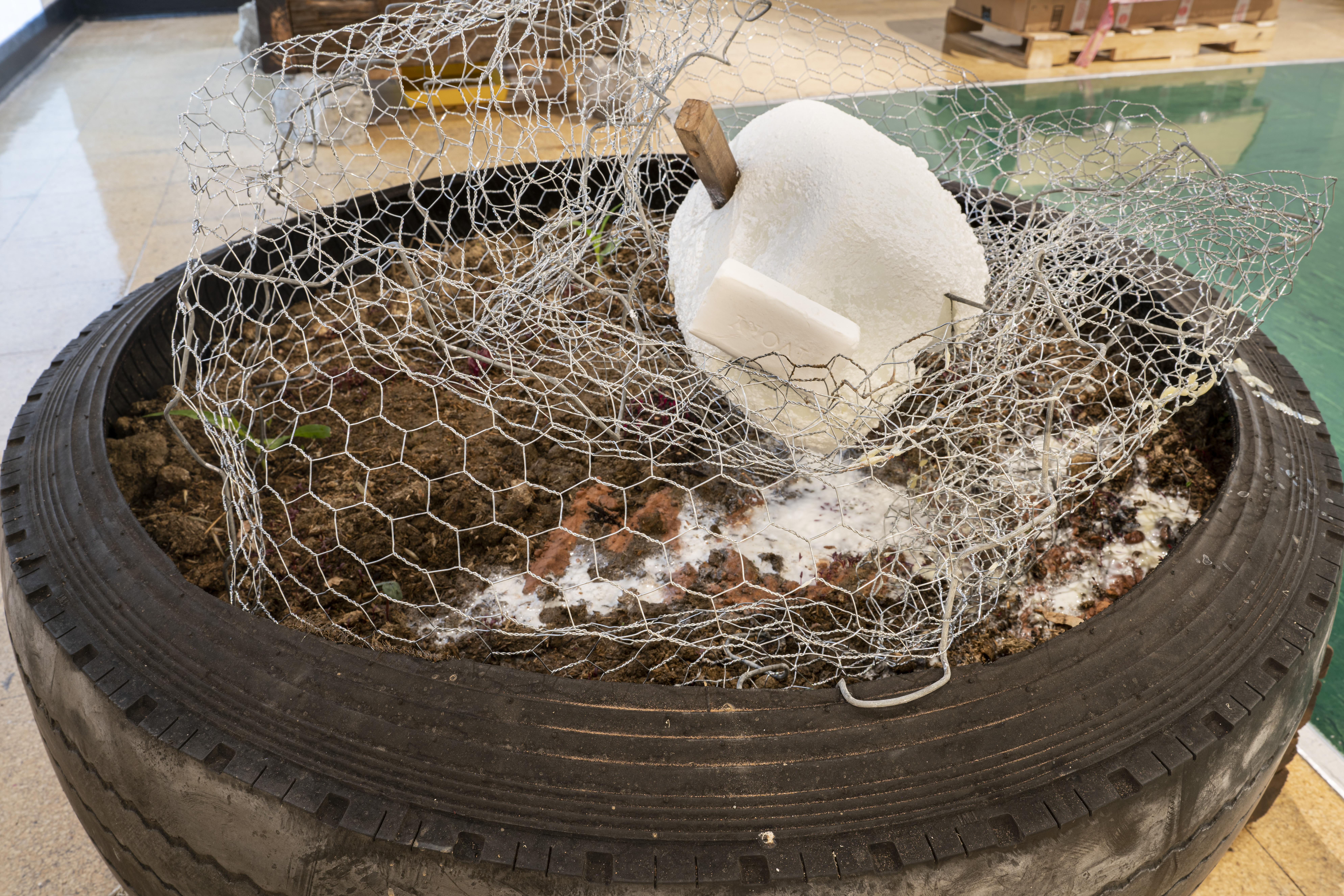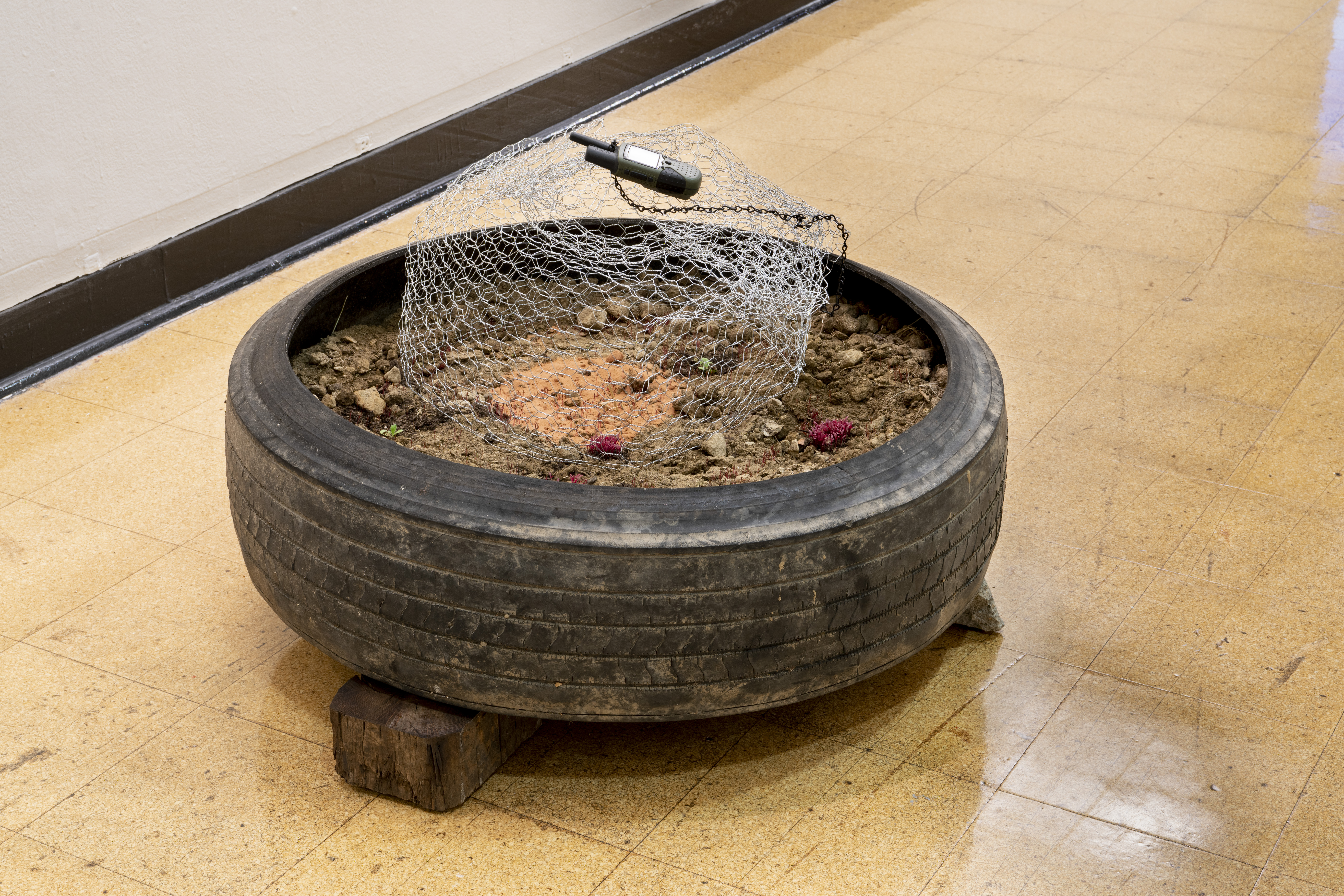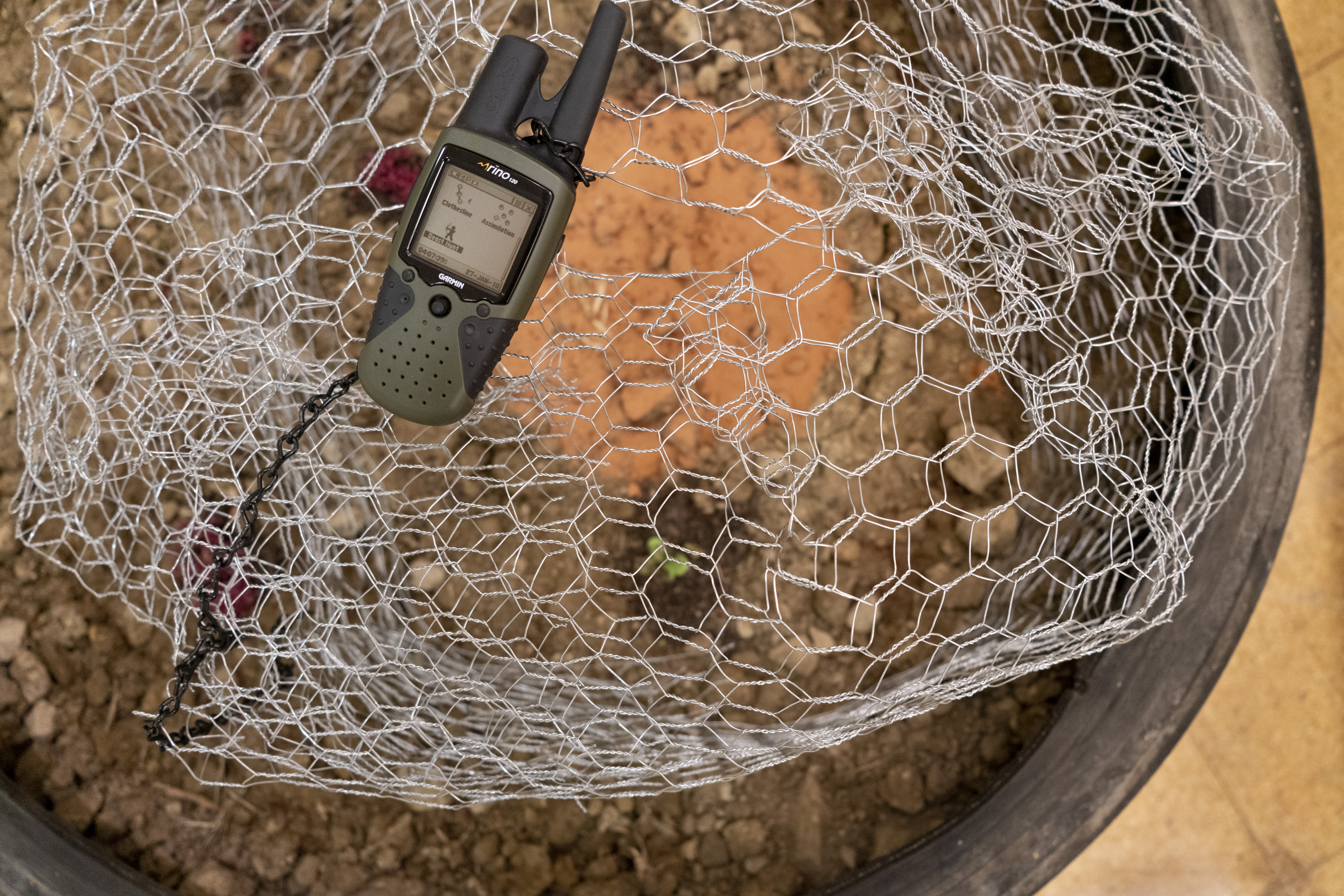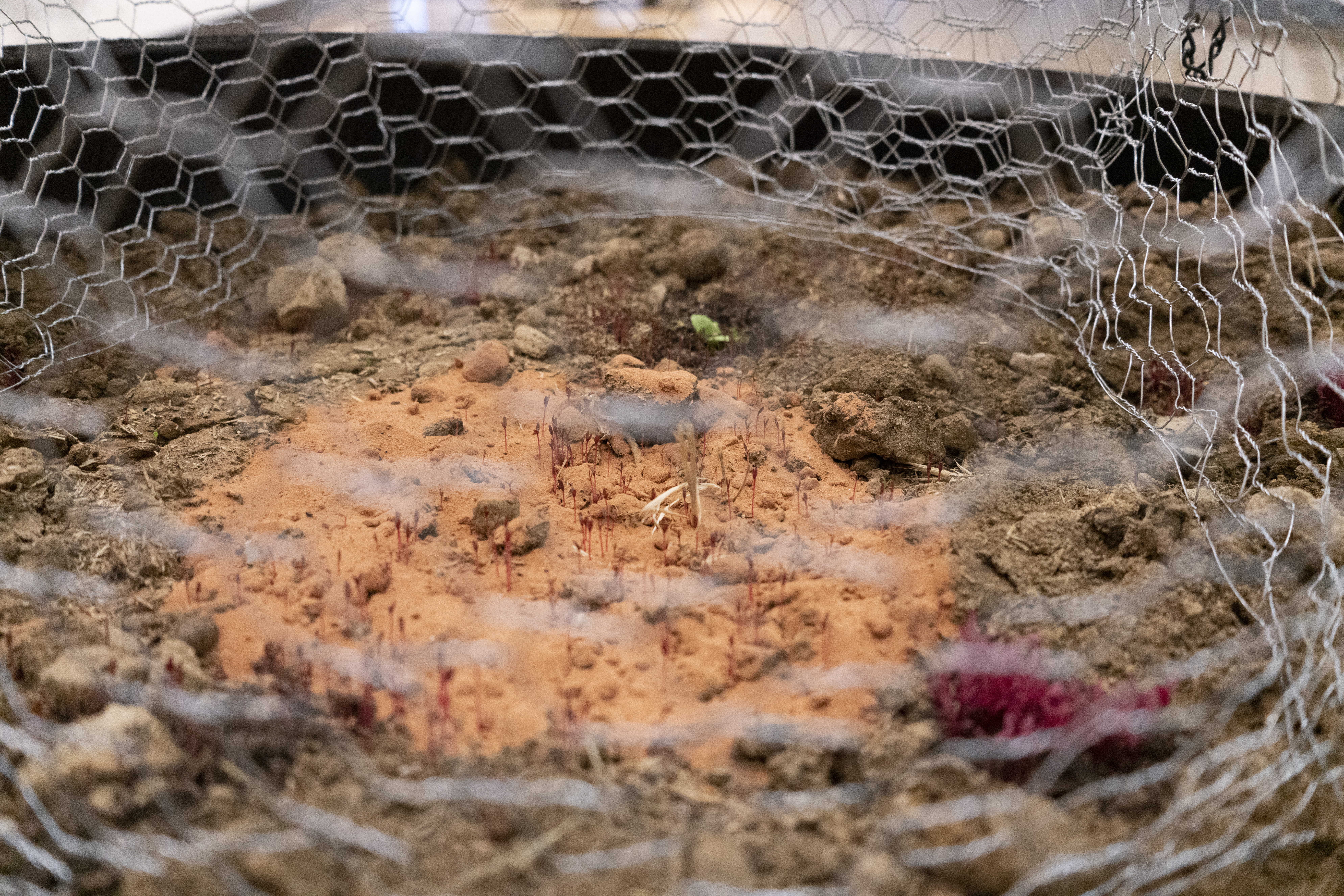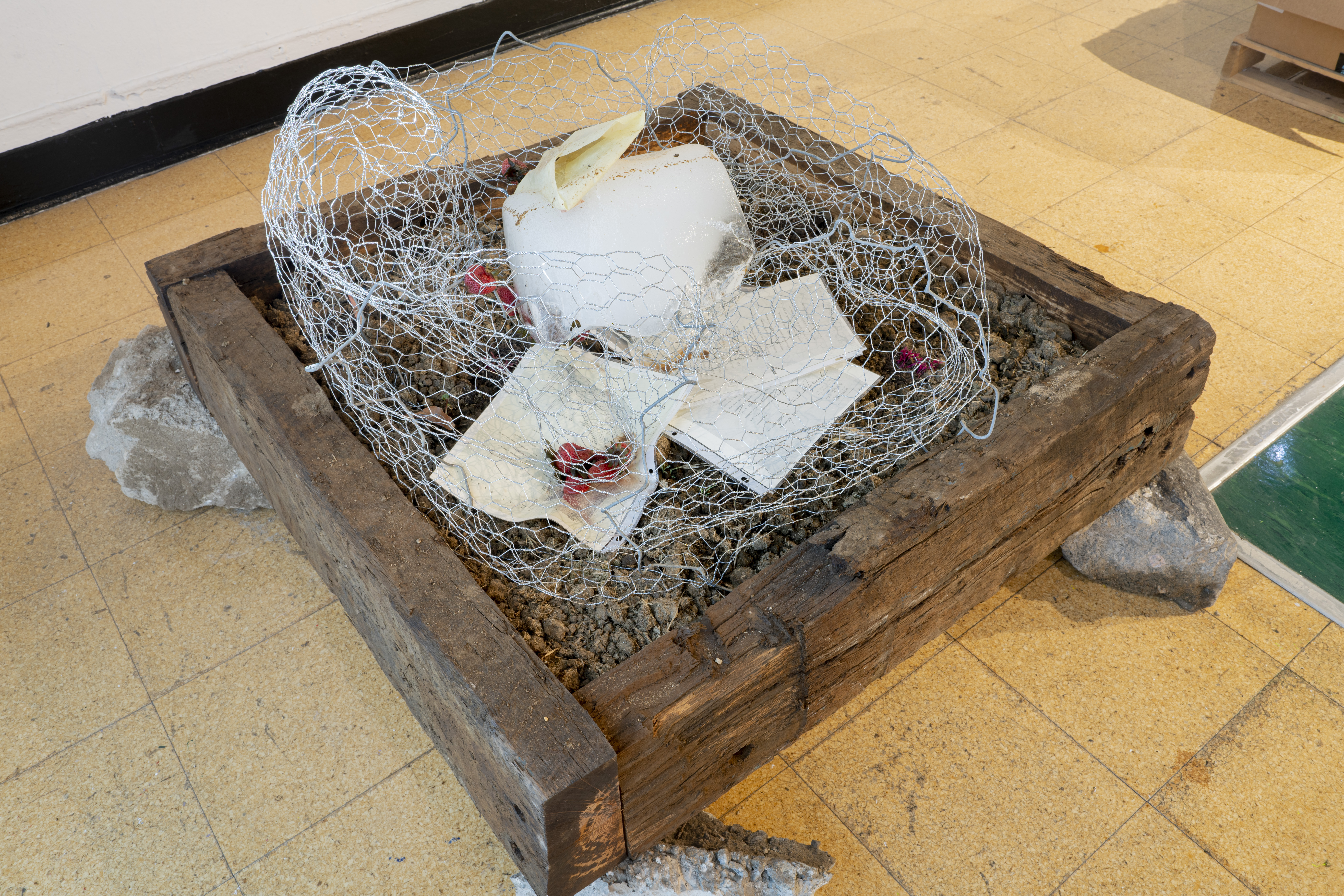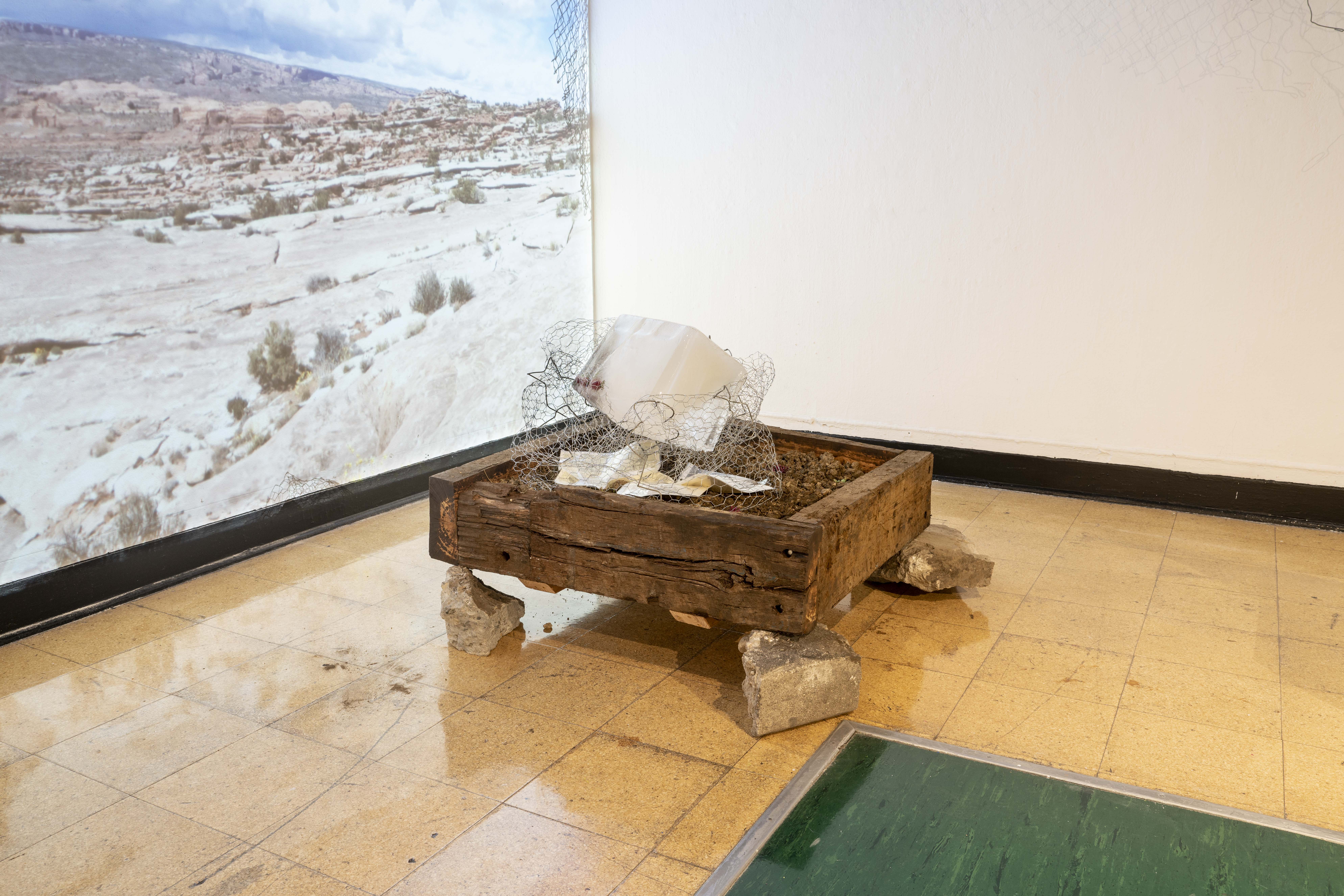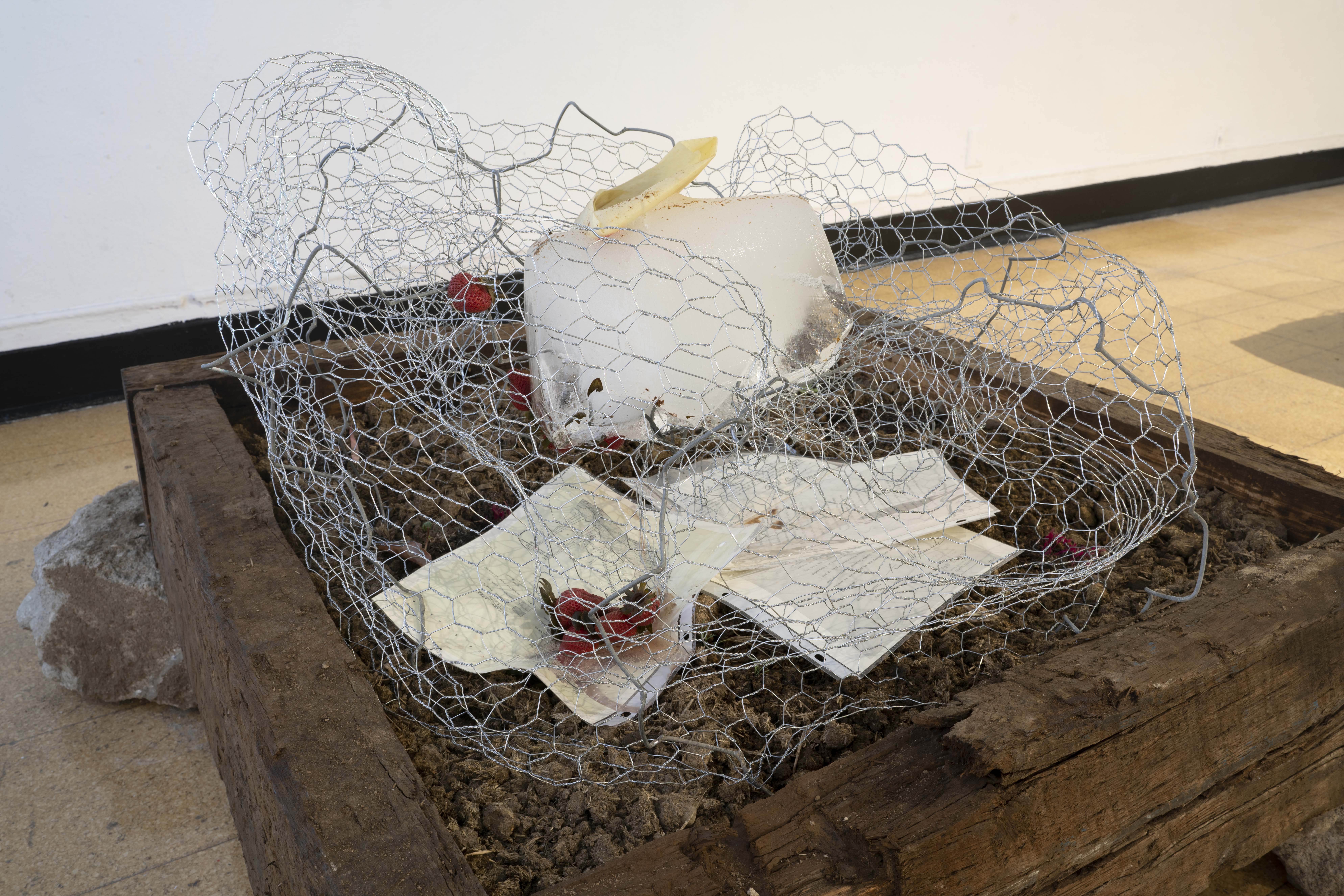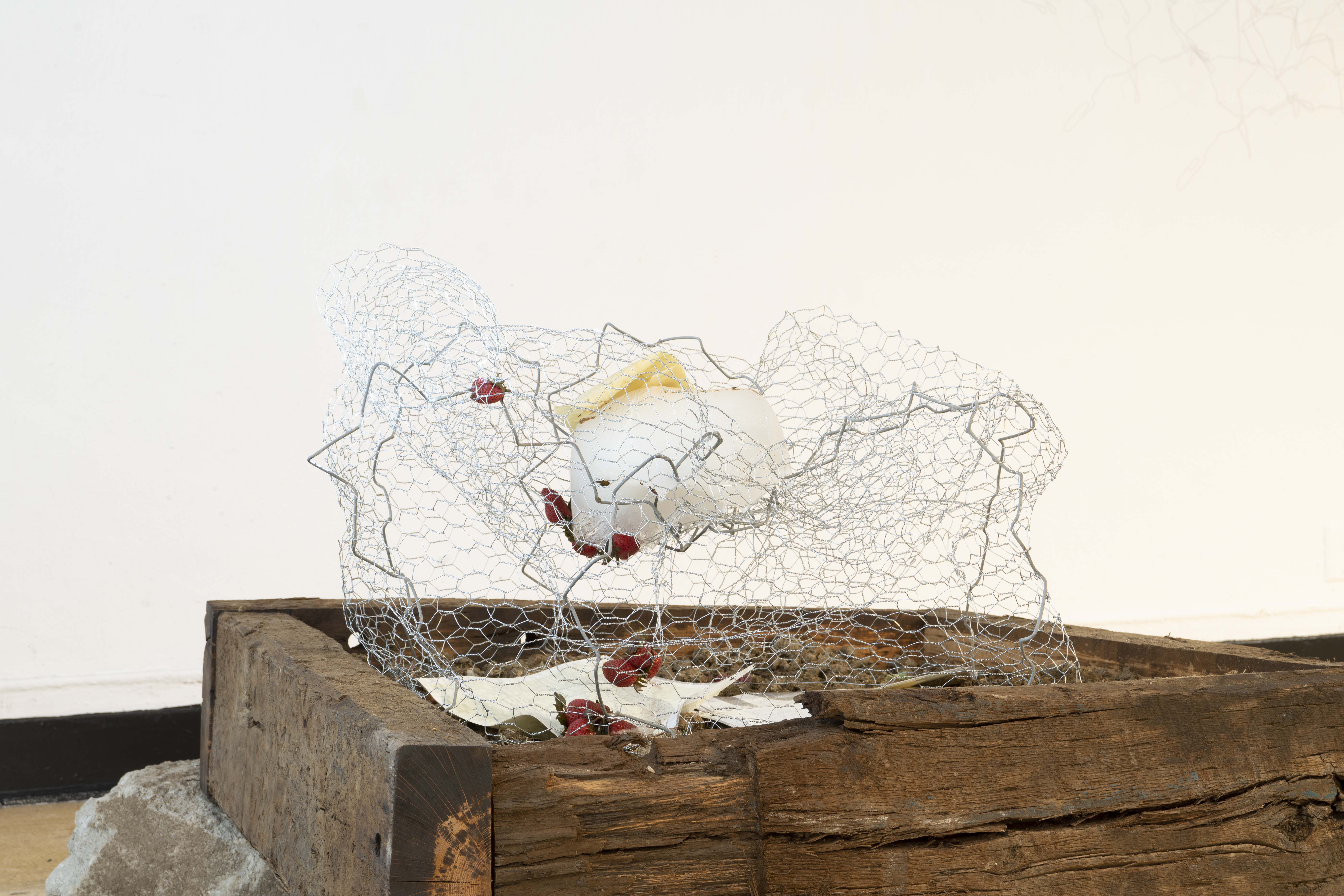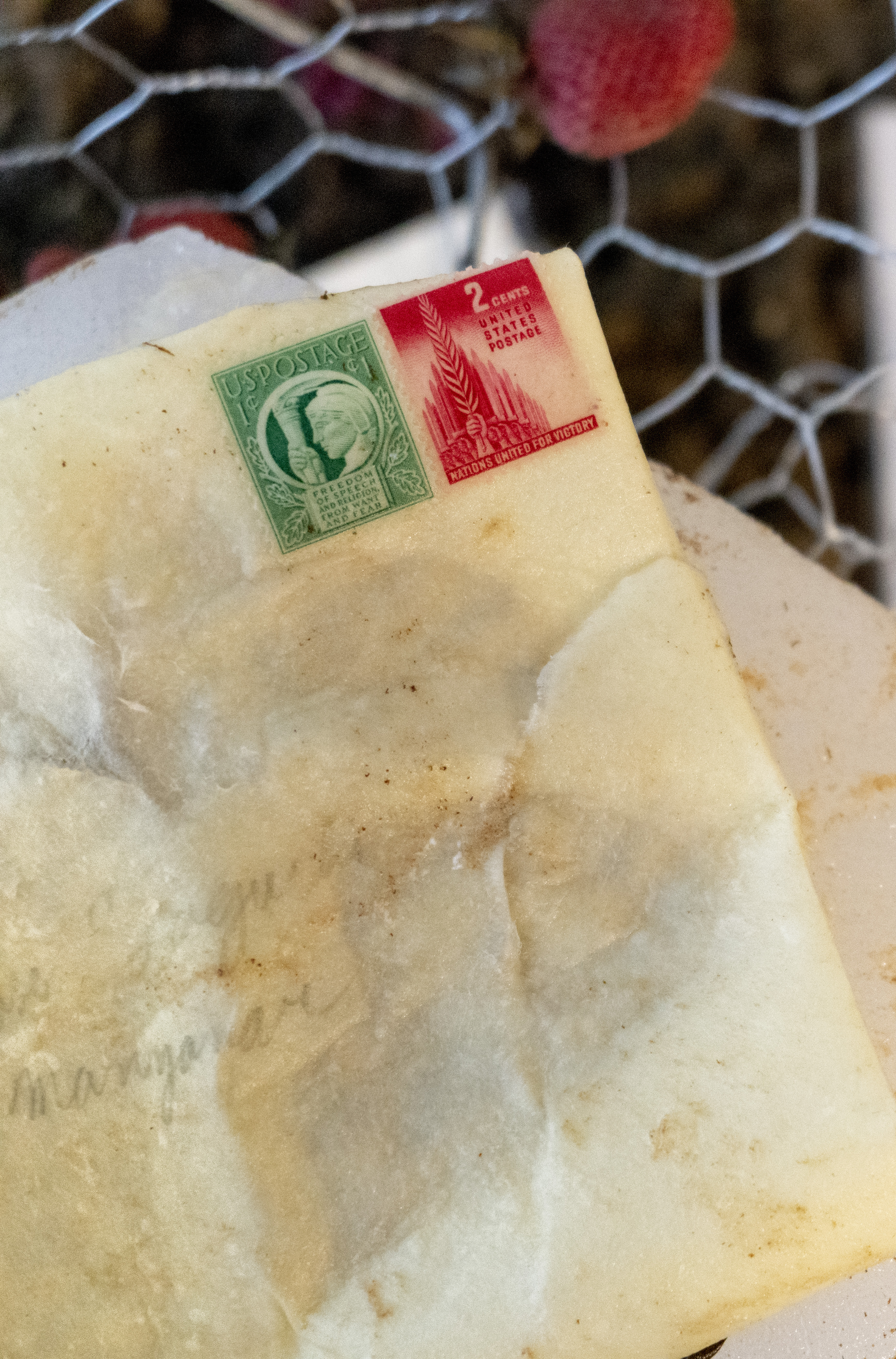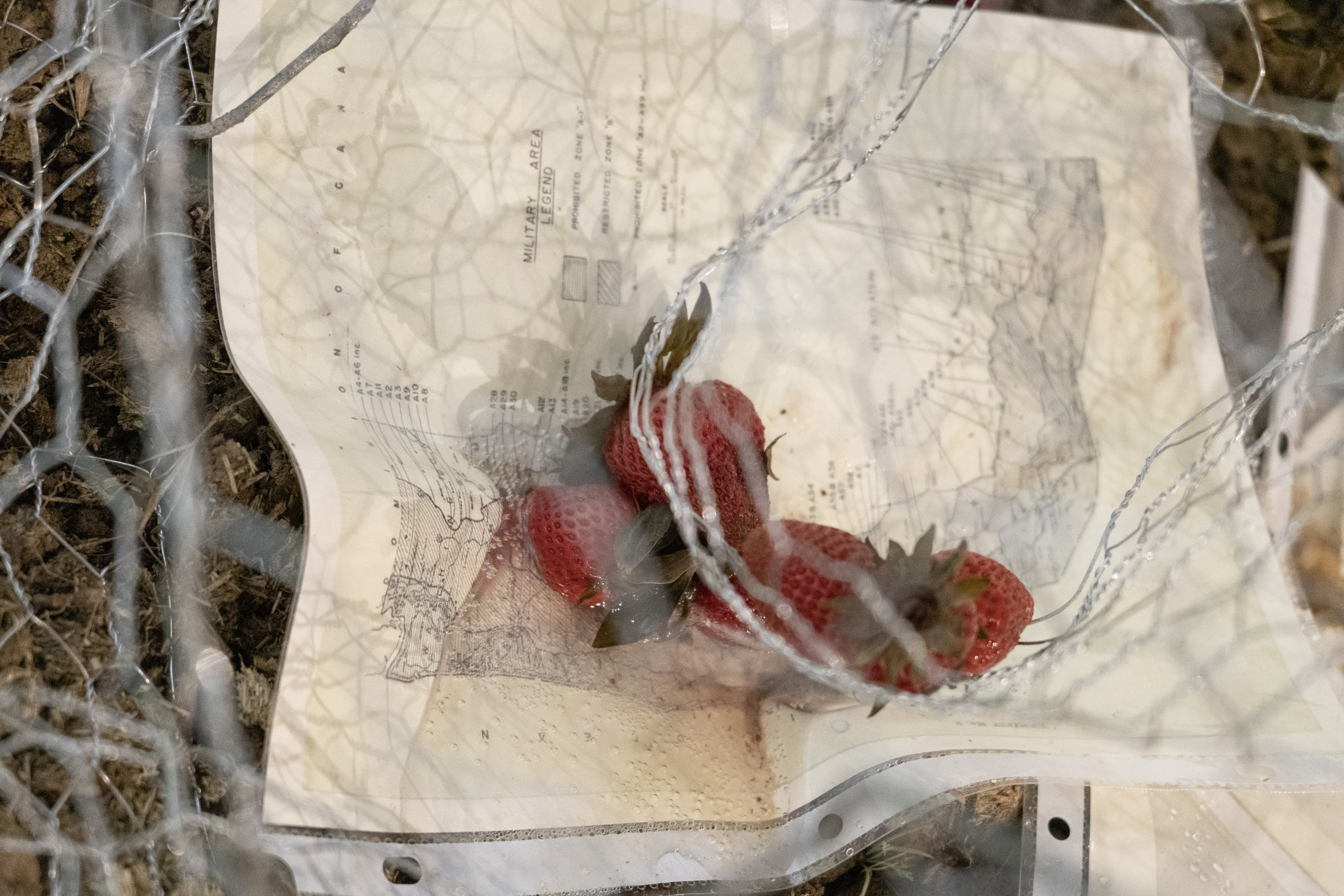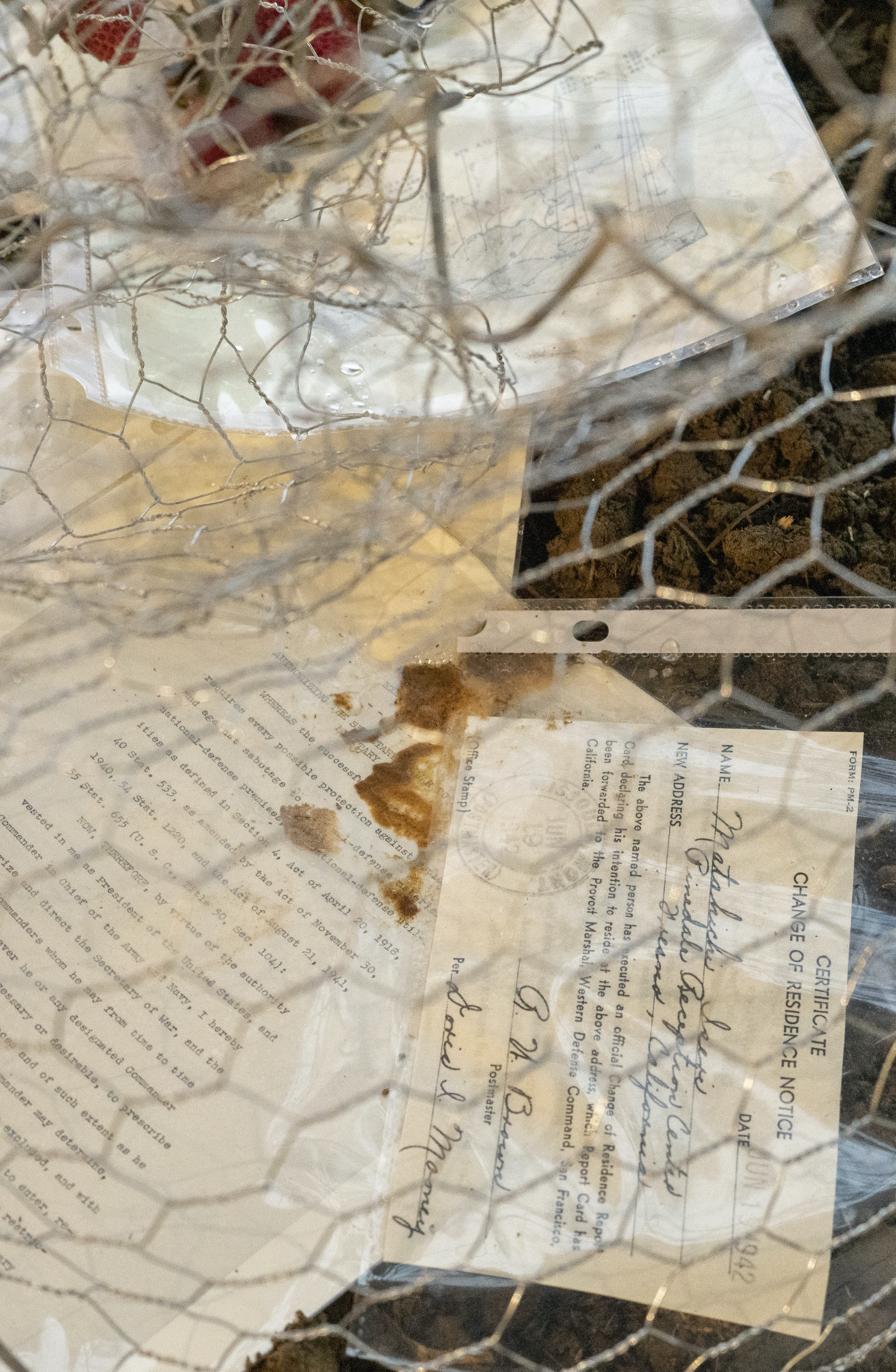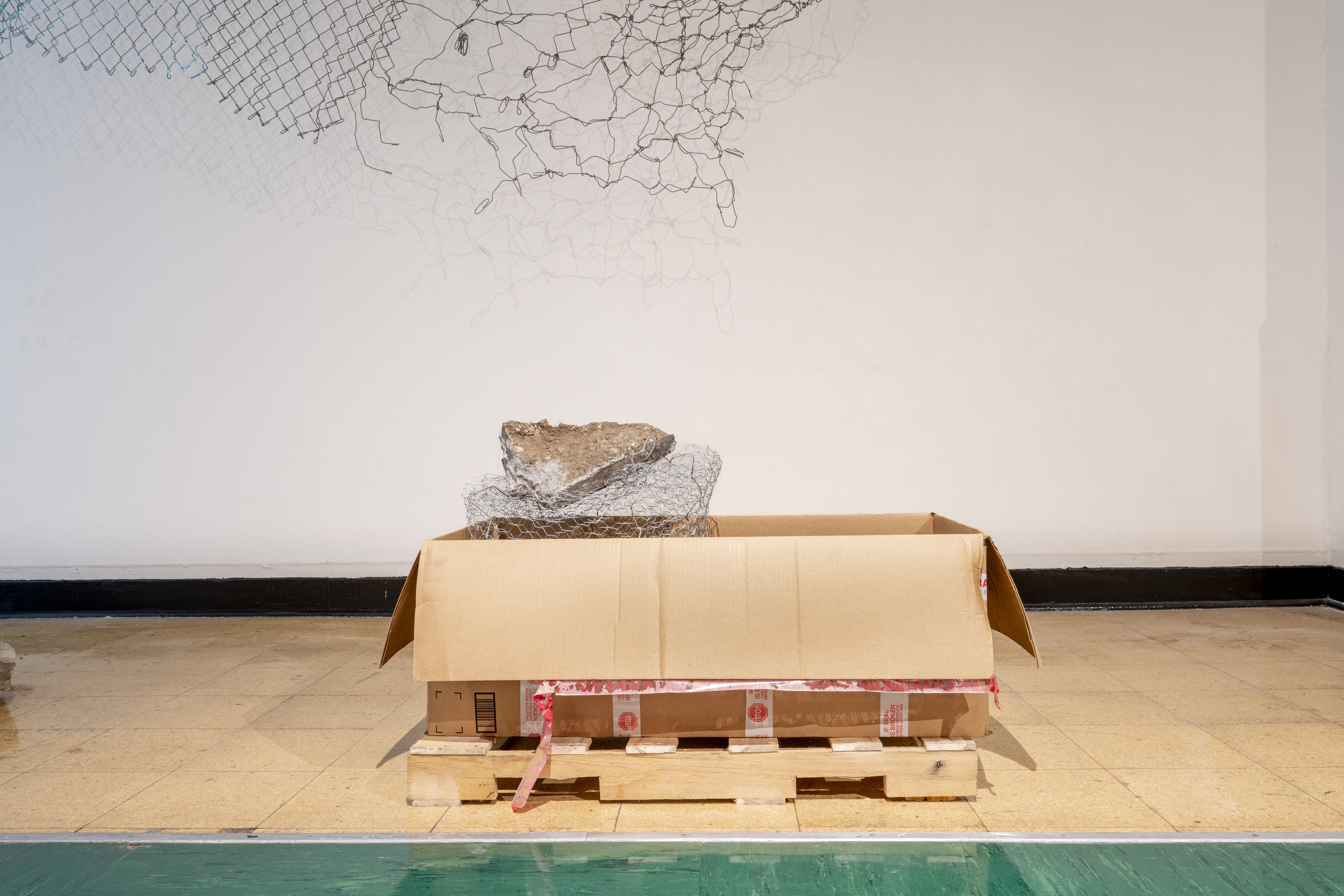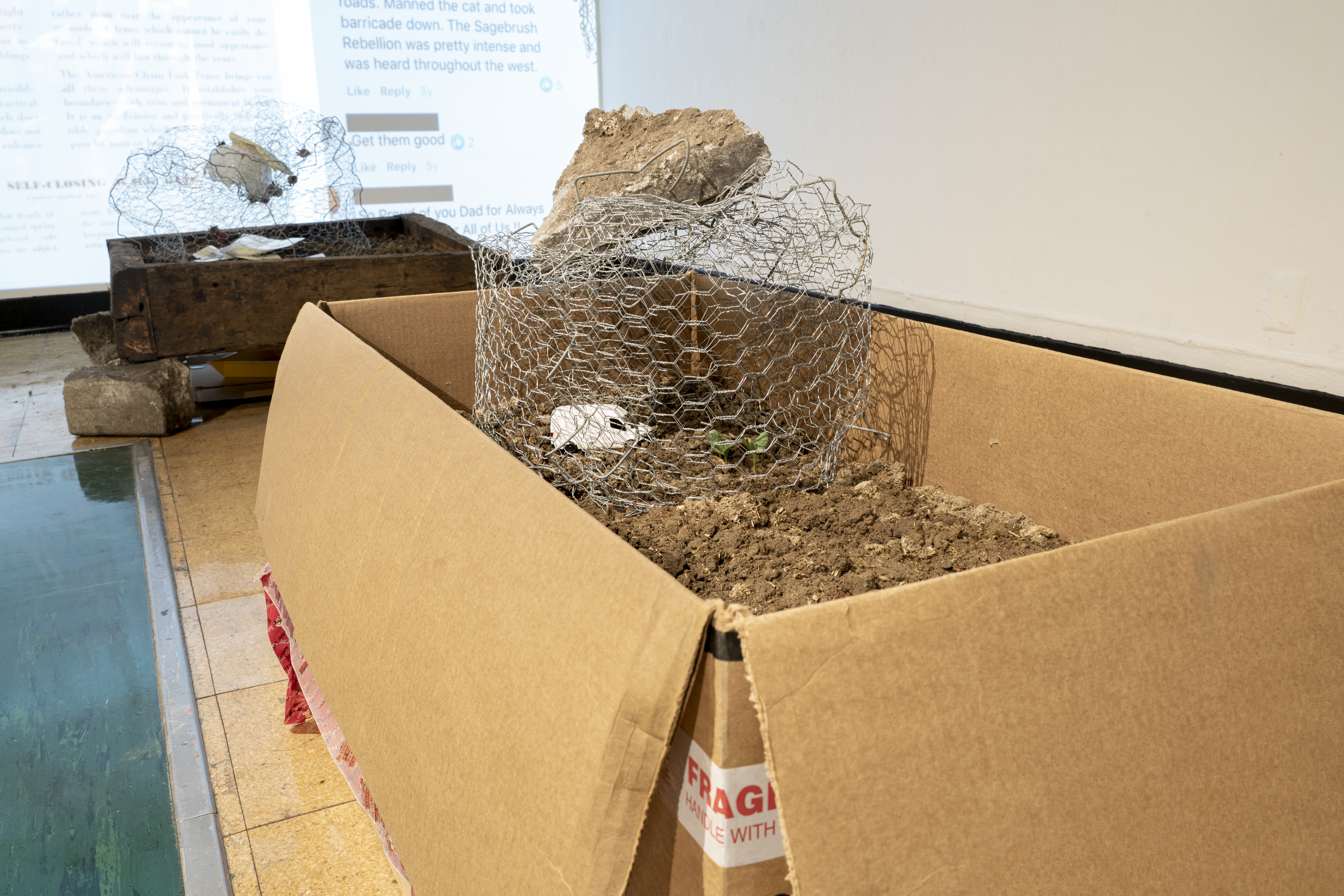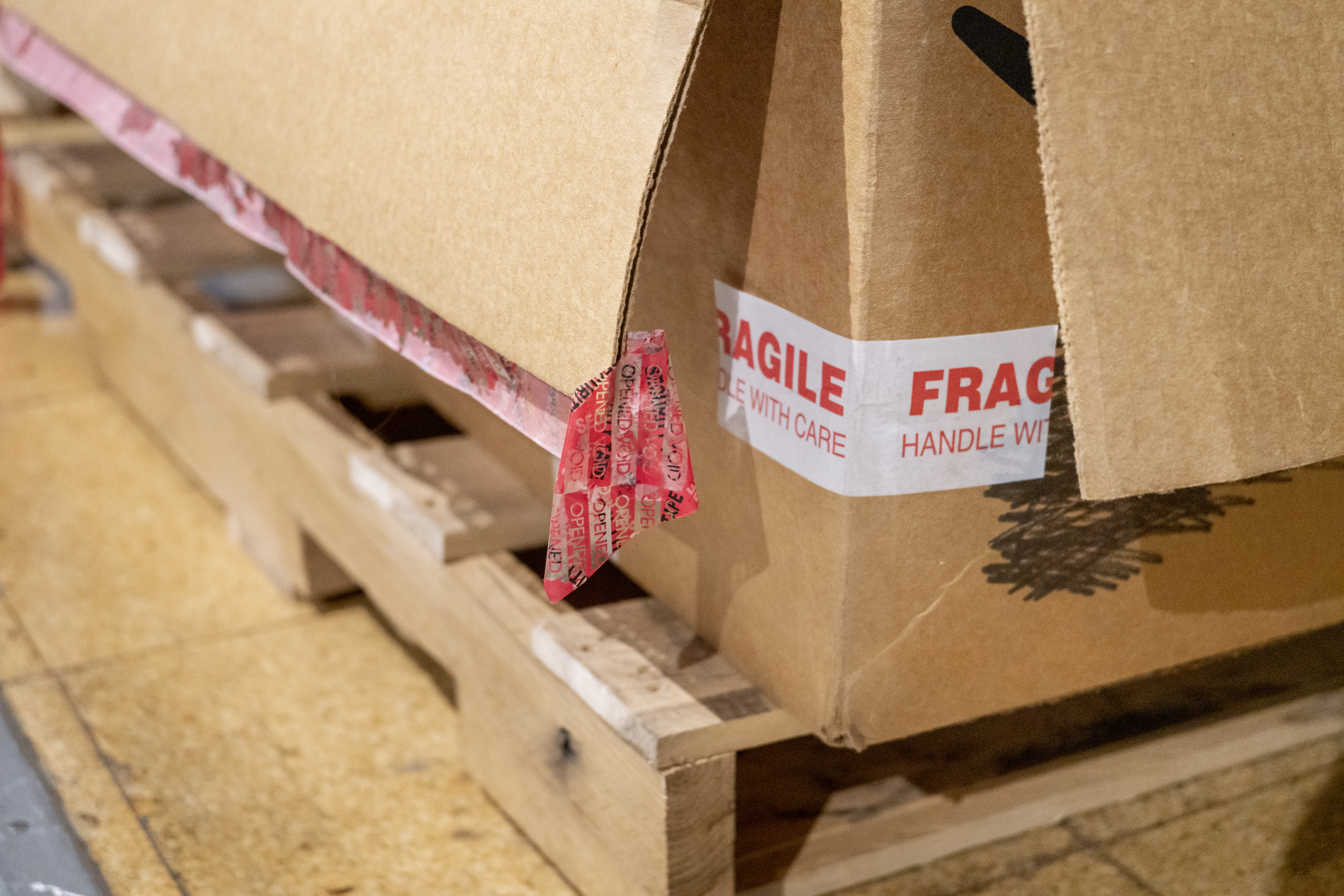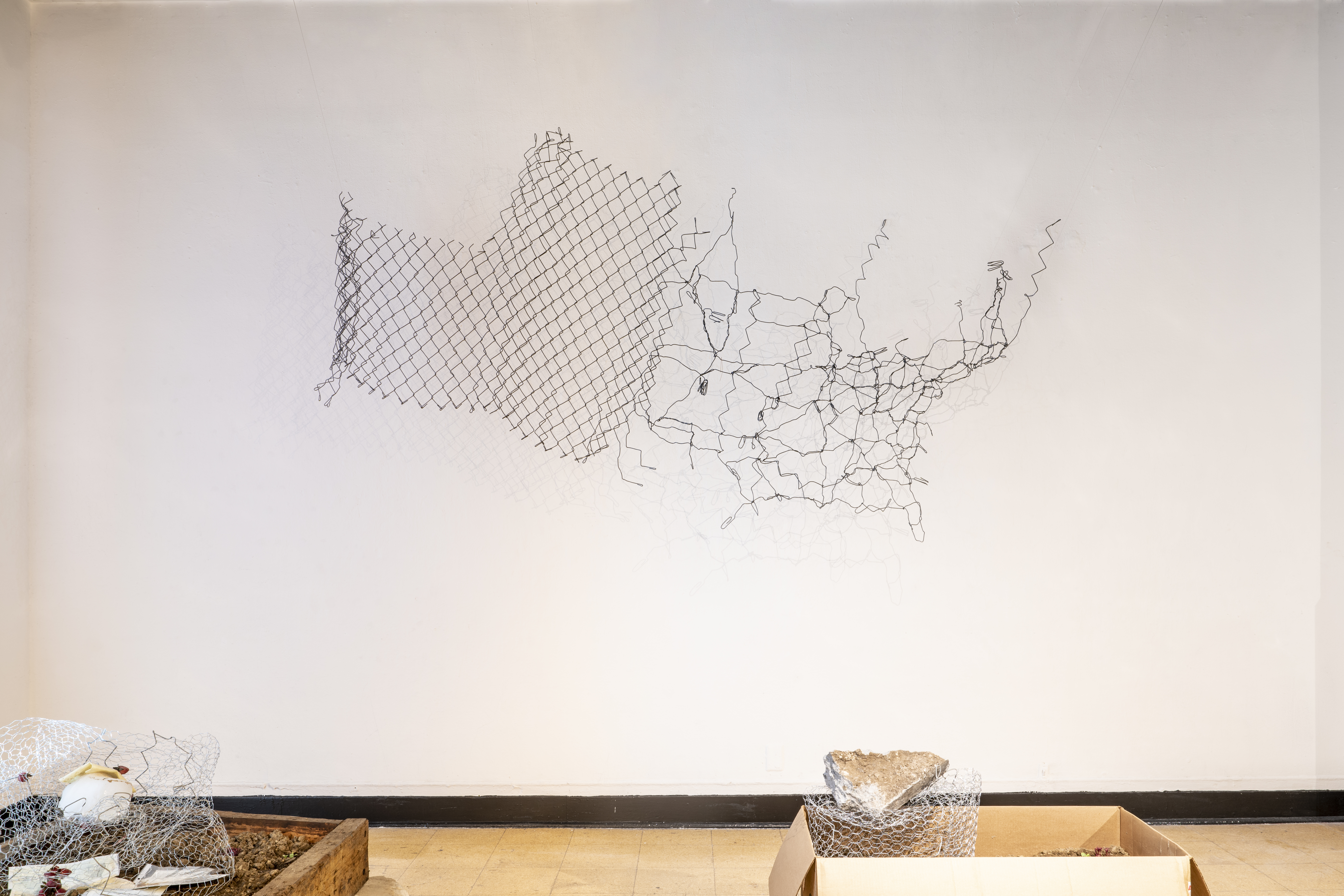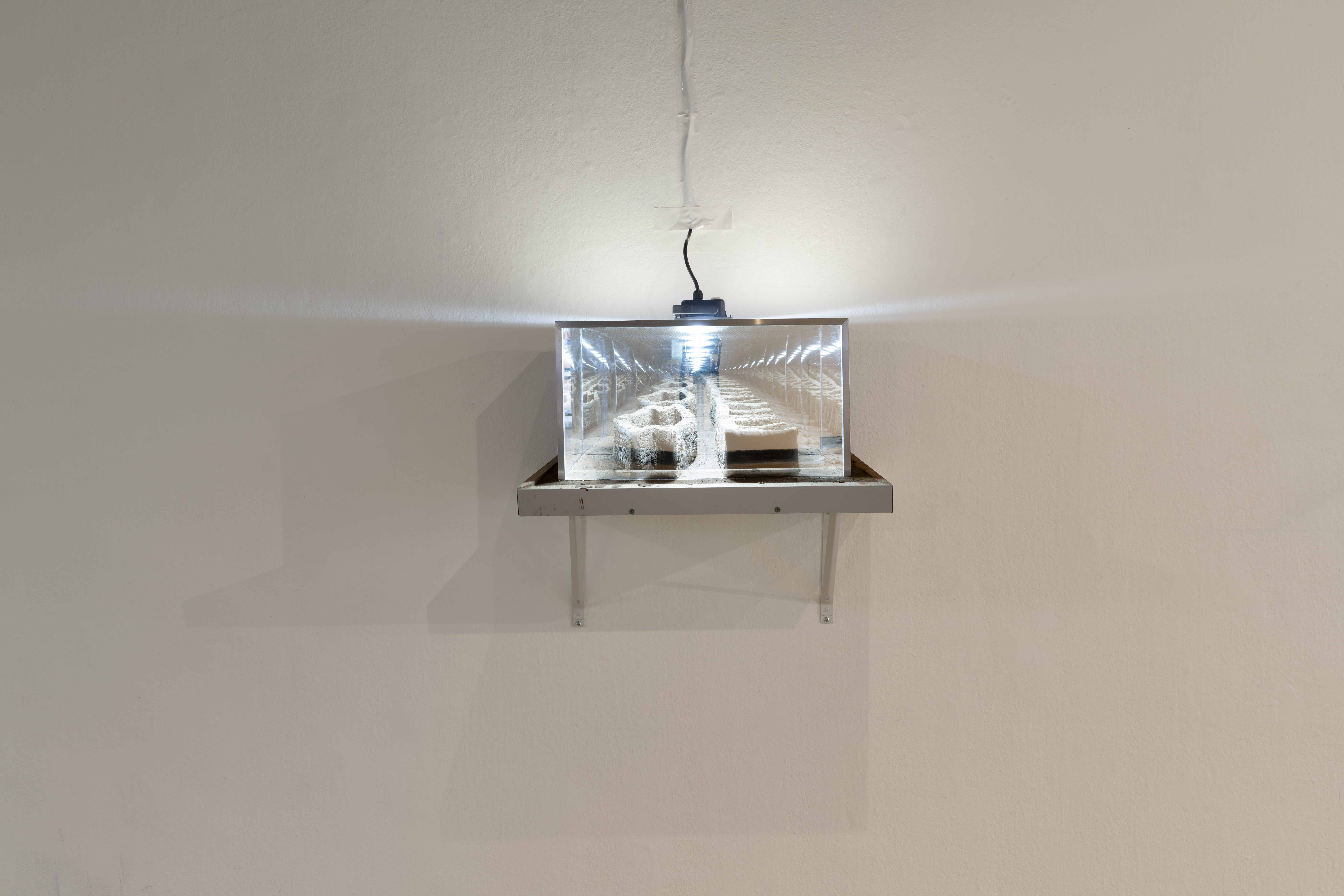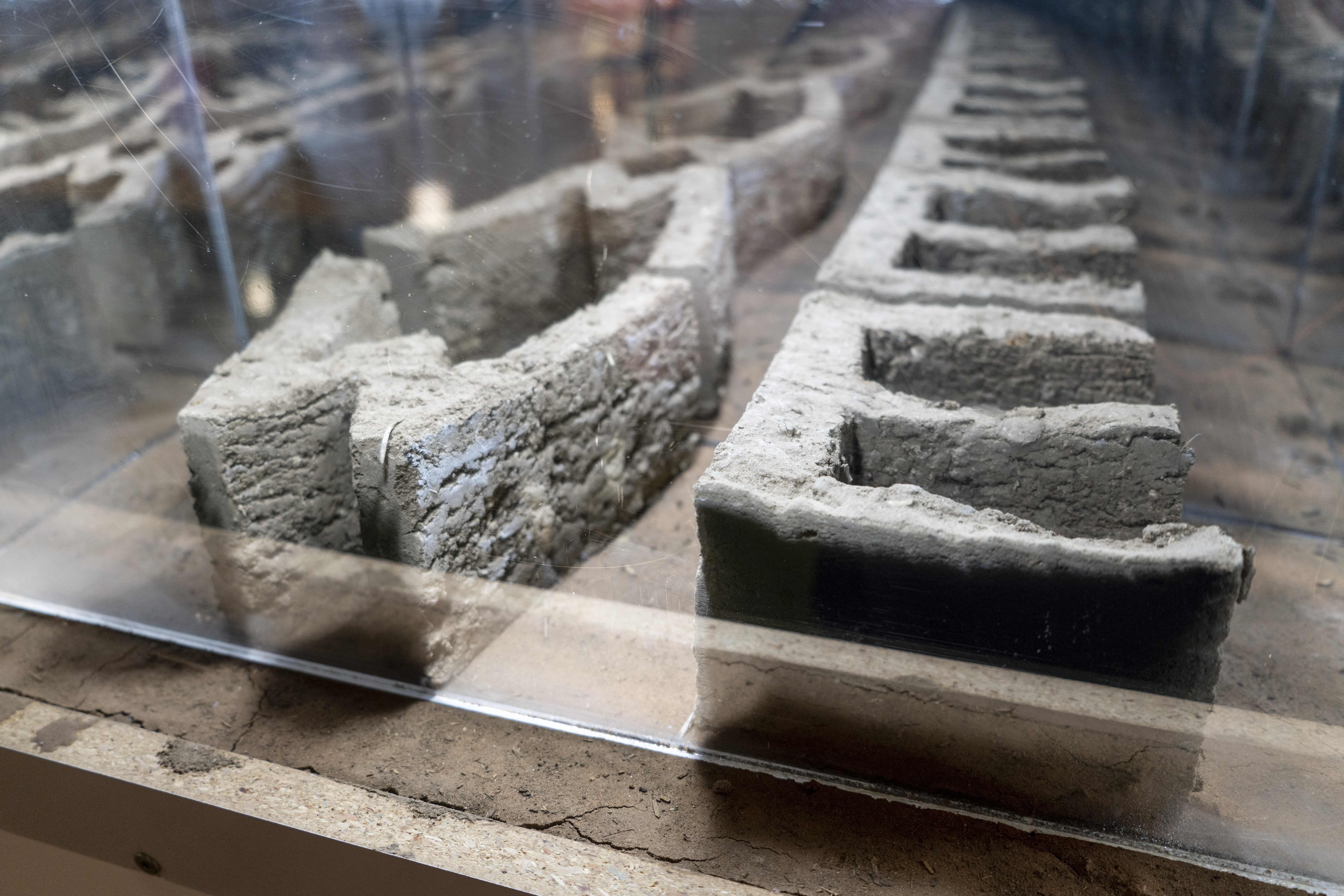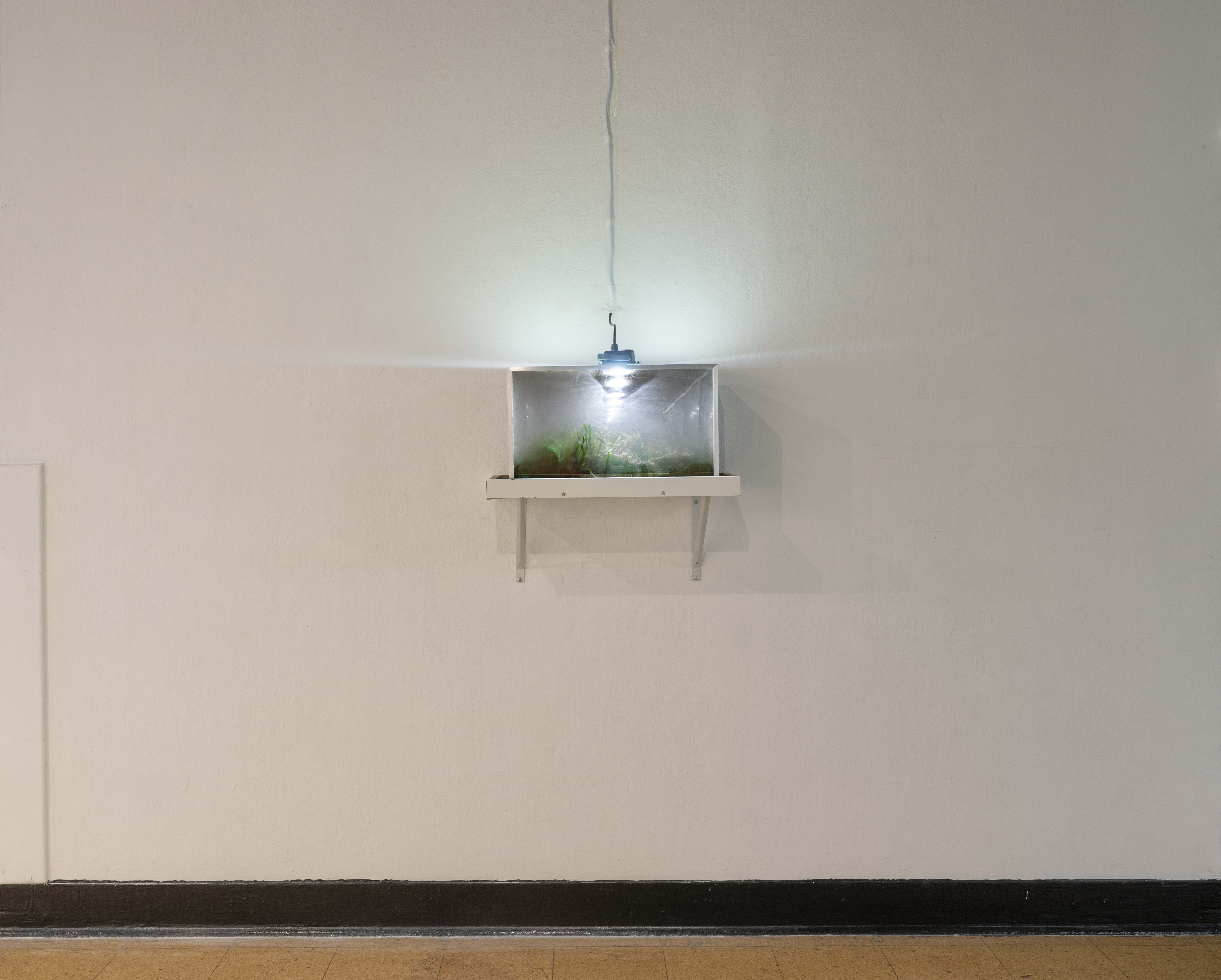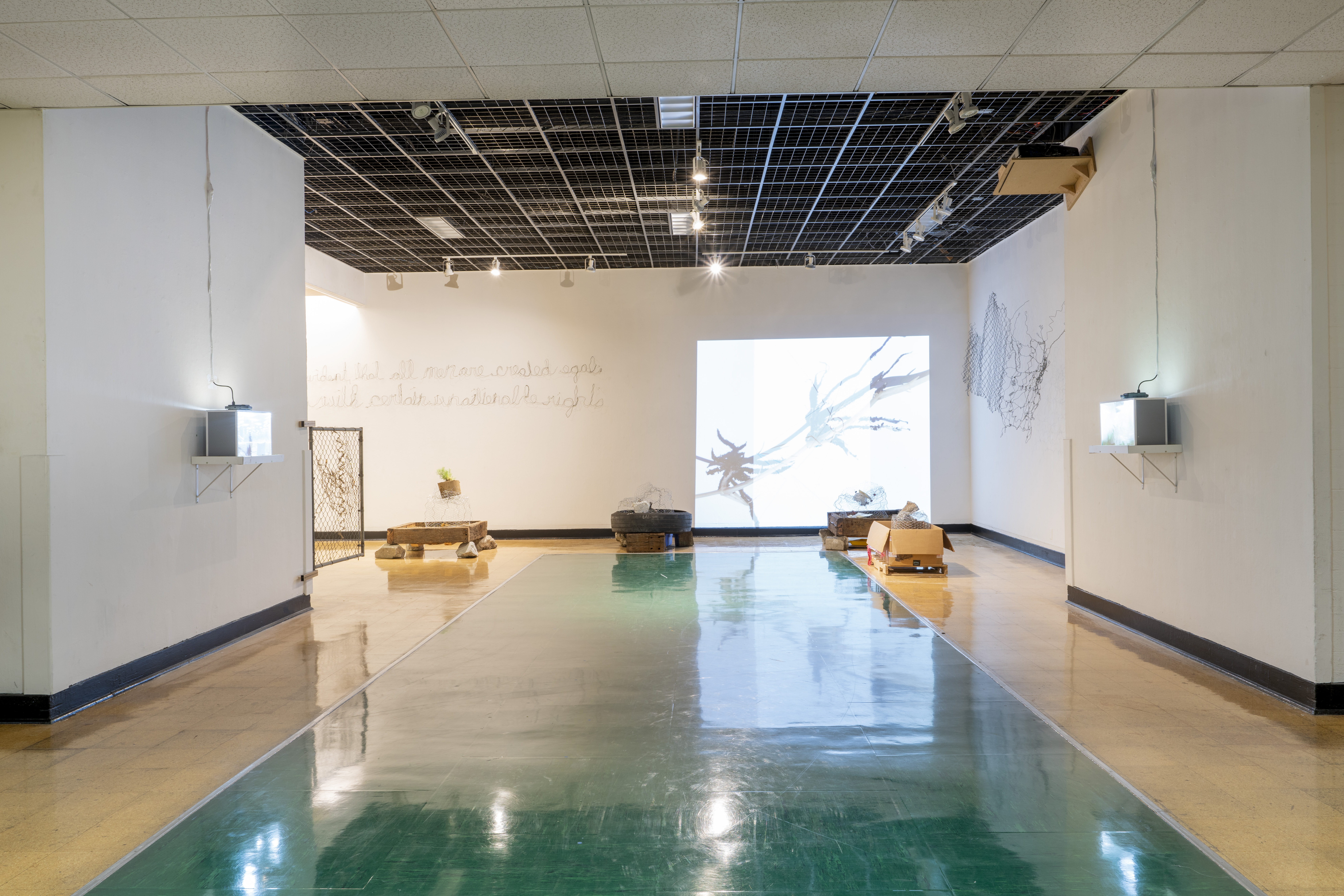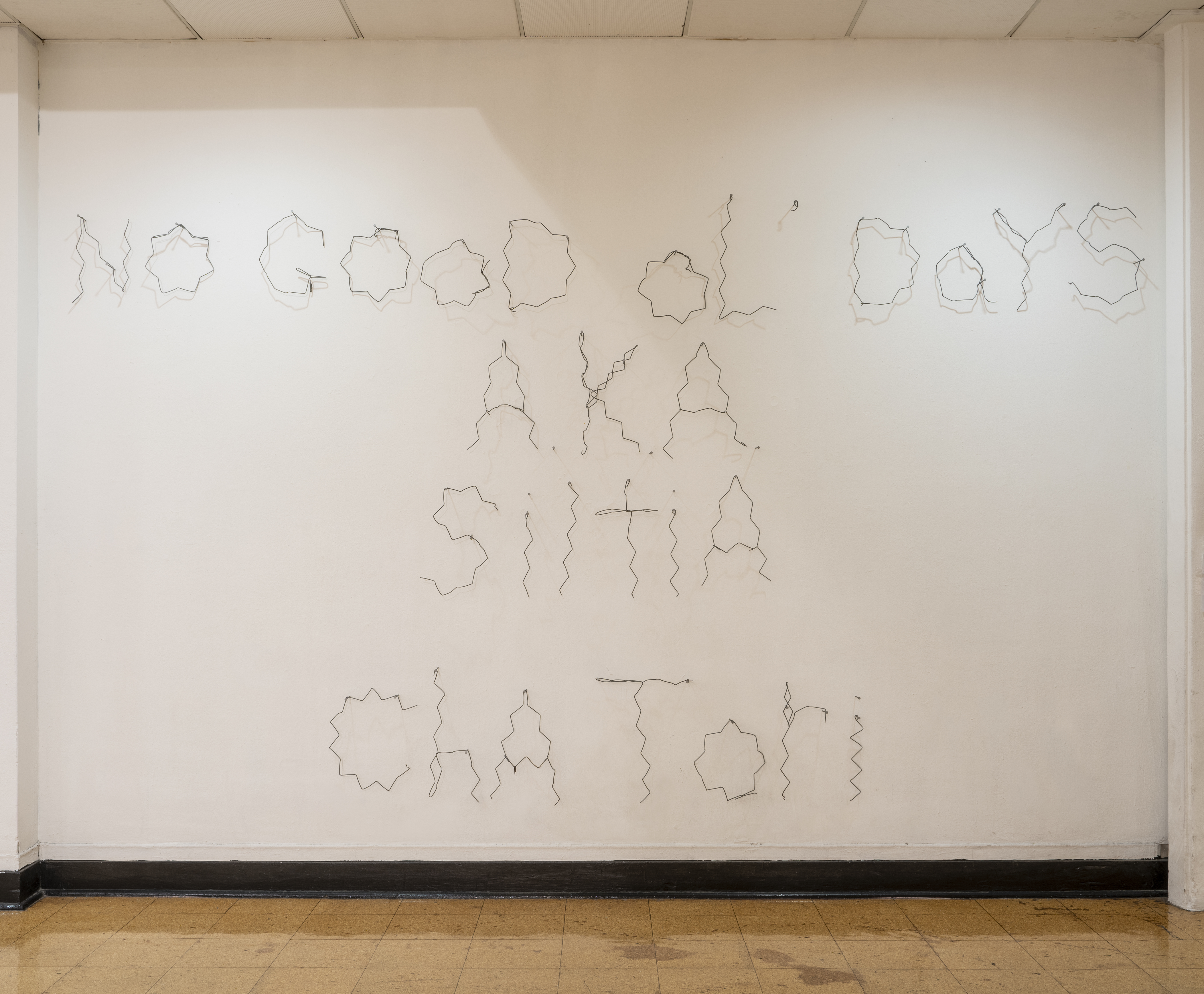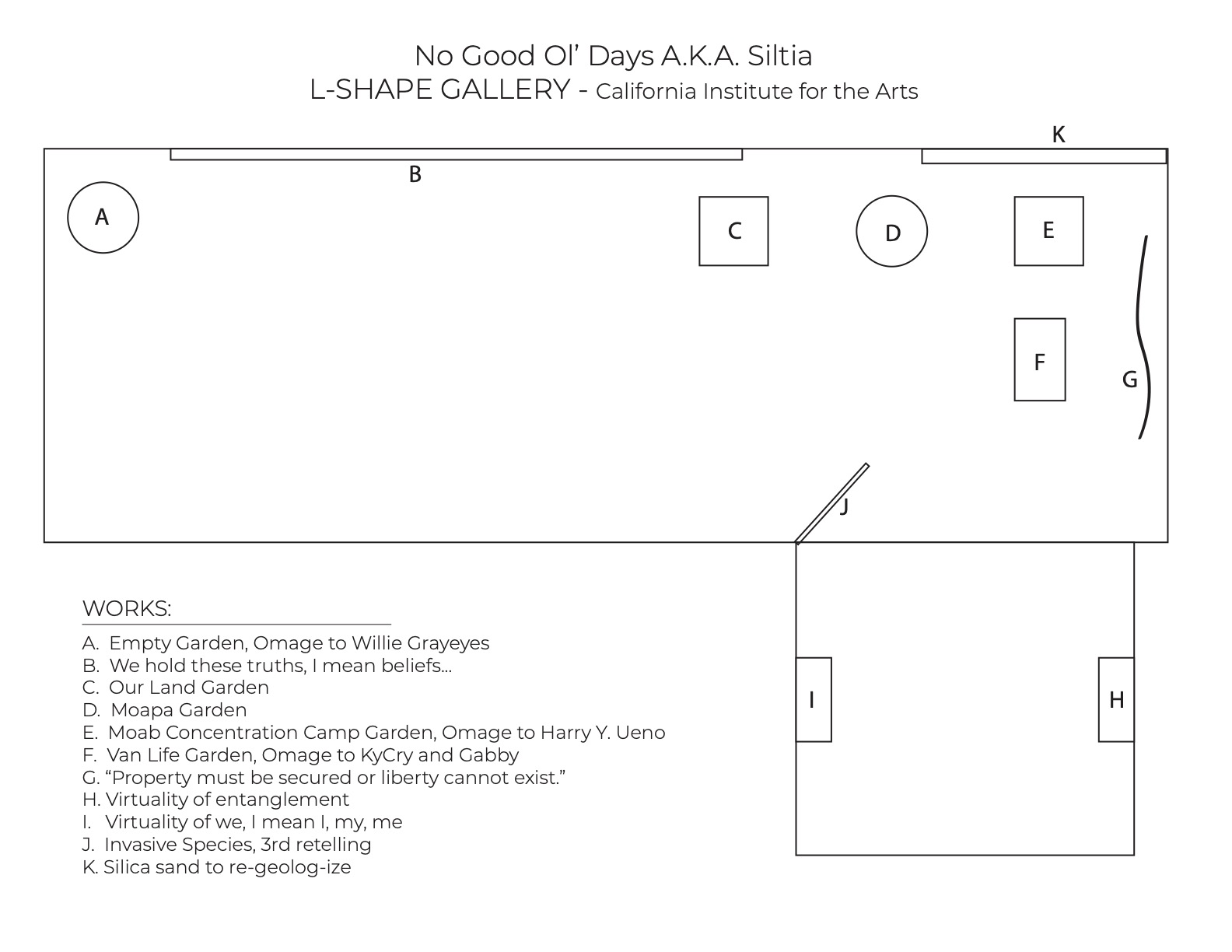Statement accompanying the exhibition No Good Ol’ Days A.K.A. Siltia, work by Cha Tori
It seems like apocalypse is everywhere these days, you know, in contrast to back then... Or maybe it’s an issue of scale. Climate change we’re told is a species wide apocalypse, so should I zoom in or zoom out to see its consequences. That was a trap you know, one laid for me and which I repeated. It’s like this question(also a trap): is a pile of soil from California more or less California than the outline of the state of California?
I learned the term “structural trap” from an inhuman geographer, why didn’t I learn it in high school in Debate, or English or History or or or... because a structural trap is a pocket in the earth where something has been trapped (usually gas). Among the arches and red sandstone canyons where I grew up there are lots of structural traps. Recently someone trucked in a crypto-mining rig that hooks up to the flared-off natural gas—less gas wasted, you know. Some miners out in these canyons found themselves in a structural trap in 1963 when they hit a pocket of natural gas and their tunnel collapsed. Most of them died. The lines of a map which were described in an Executive Order from FDR, trapped a group of Japanese-Americans who were shipped by rail to this same desert to be held without charges for 3 months before being shipped away again.
The structural is bedrock, it is railways and interstates, laws and reason. See, the minimum wage was recently increased, and new zoning laws passed which incentivize high density building, and the community resource center got a new building and everyone gets to live the dream of van-life, which to be clear means finding a different place to park each night and telling the customer at the counter about how it has made you appreciate the few things you have space for so much more. What’s the difference between a safety net and a structural trap? The answer’s the same, it’s a matter of scale. One you fall through, the other catches you because it remembers your name.
Another question (I don’t think this one is a trap), is grass scaleable? Maybe it depends on who you ask. It sure seems like it to me but when I tried making its algorithm, it never quite looked right, I think I got the rhizomes and stolons confused. I kept losing detail. It’s like when I got the horse manure for the garden beds and a month later alongside the plants, I discovered mushrooms dotting the garden. I didn’t know what I had until I hadn’t lost it.
I got it, I got the exact same GPS model as the police officer who had declared that there was nothing there. I wonder if he played any of the games that come with the GPS unit, there are 5: Memory Race, Waypoint Bomber, Clothesline, Assimilation, and Beast Hunt. I didn’t get it until I got it. The evidence file hadn’t included the games, of course not, they were games. The Craigslist ad for the manure hadn’t mentioned it would include mushrooms, no one had bothered to ask the horses.
What I mean to get at is the virtuality of the trap. Virtuality is scalable, it can appear to go on fornever. It tells you what things are. It hides belief behind truth, it says we, when it means me, which is to say mine, which is to say a mine, which is to say a structural trap. So I want to be encircled by soil. I plant, I toy, I structure, I metaphor, language, and meaning, because the soil is different in its granularity. That which has been in the midst of that which will be. It’s not an answer, it isn’t hope, but it at least tries to let things be what they are.
It seems like apocalypse is everywhere these days, you know, in contrast to back then... Or maybe it’s an issue of scale. Climate change we’re told is a species wide apocalypse, so should I zoom in or zoom out to see its consequences. That was a trap you know, one laid for me and which I repeated. It’s like this question(also a trap): is a pile of soil from California more or less California than the outline of the state of California?
I learned the term “structural trap” from an inhuman geographer, why didn’t I learn it in high school in Debate, or English or History or or or... because a structural trap is a pocket in the earth where something has been trapped (usually gas). Among the arches and red sandstone canyons where I grew up there are lots of structural traps. Recently someone trucked in a crypto-mining rig that hooks up to the flared-off natural gas—less gas wasted, you know. Some miners out in these canyons found themselves in a structural trap in 1963 when they hit a pocket of natural gas and their tunnel collapsed. Most of them died. The lines of a map which were described in an Executive Order from FDR, trapped a group of Japanese-Americans who were shipped by rail to this same desert to be held without charges for 3 months before being shipped away again.
The structural is bedrock, it is railways and interstates, laws and reason. See, the minimum wage was recently increased, and new zoning laws passed which incentivize high density building, and the community resource center got a new building and everyone gets to live the dream of van-life, which to be clear means finding a different place to park each night and telling the customer at the counter about how it has made you appreciate the few things you have space for so much more. What’s the difference between a safety net and a structural trap? The answer’s the same, it’s a matter of scale. One you fall through, the other catches you because it remembers your name.
Another question (I don’t think this one is a trap), is grass scaleable? Maybe it depends on who you ask. It sure seems like it to me but when I tried making its algorithm, it never quite looked right, I think I got the rhizomes and stolons confused. I kept losing detail. It’s like when I got the horse manure for the garden beds and a month later alongside the plants, I discovered mushrooms dotting the garden. I didn’t know what I had until I hadn’t lost it.
I got it, I got the exact same GPS model as the police officer who had declared that there was nothing there. I wonder if he played any of the games that come with the GPS unit, there are 5: Memory Race, Waypoint Bomber, Clothesline, Assimilation, and Beast Hunt. I didn’t get it until I got it. The evidence file hadn’t included the games, of course not, they were games. The Craigslist ad for the manure hadn’t mentioned it would include mushrooms, no one had bothered to ask the horses.
What I mean to get at is the virtuality of the trap. Virtuality is scalable, it can appear to go on fornever. It tells you what things are. It hides belief behind truth, it says we, when it means me, which is to say mine, which is to say a mine, which is to say a structural trap. So I want to be encircled by soil. I plant, I toy, I structure, I metaphor, language, and meaning, because the soil is different in its granularity. That which has been in the midst of that which will be. It’s not an answer, it isn’t hope, but it at least tries to let things be what they are.
Footnotes
- Franny Choi, The World Keeps Ending | go back
- N.K. Jemisin, The Fifth Season | go back
- Gerald Vizenor, Socioacupuncture: Mythic Reversals and the Striptease in Four Scenes | go back
- Rhetorical Devices: False dilemma a.k.a. False dichotomy | go back
- Kathryn Yusoff, Geo-Logics: Natural Resources as Necropolitics | go back
- Salt Lake Tribune: This Utah oil producer... | go back
- Deseret News: Waiting, sweating, hoping for rescue... | go back
- Western Defense Command Public Proclamation No. 1 | go back
- Executive Order 9066 | go back
- OAC: REgenerations Oral History Project..., section/page 493 | go back
- OAC: REgenerations Oral History Project..., section/page 497 | go back
- City of Moab Ordinance #2018-19 | go back
- KZMU Audio Portrait, Friday, February 26th, 2021 | go back
- Garmin, Rino 120 | go back
- Utah Courts: Appellant’s Opening Brief, 10.11.19, Exhibit J, page 120, lines 13-14 | go back
- Craigslist: Horse Manure Compost, accessed 4/20/2022 | go back
- Kathryn Yusoff: Mine as Paradigm, section Mine as Property | go back
- á la Irmgard Emmelhainz, Shattering and Healing: “Vulnerability as an acknowledgment of the desire for intimacy. So after a long, difficult road, I have come to learn to lie in you like land lies in water.” | go back
